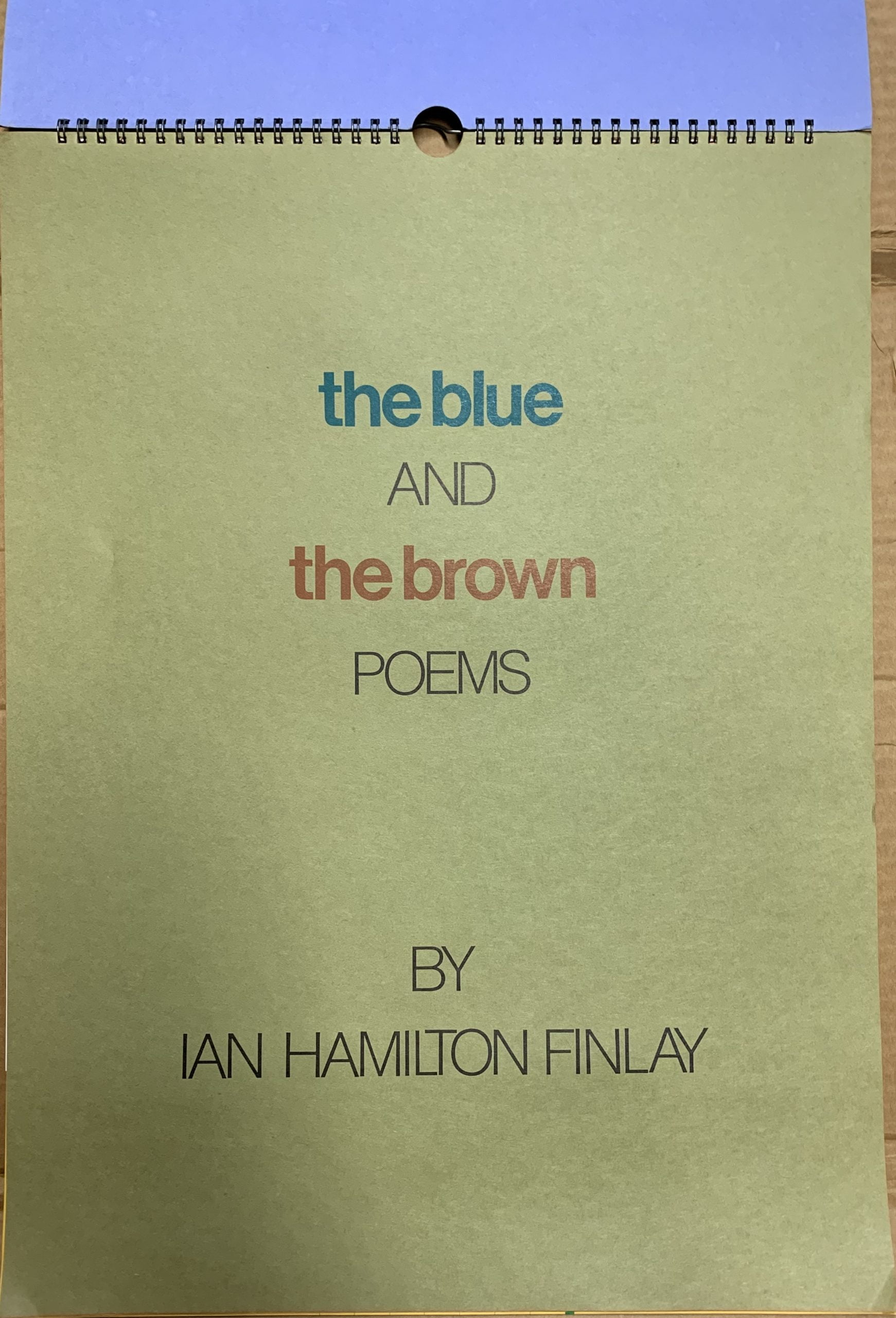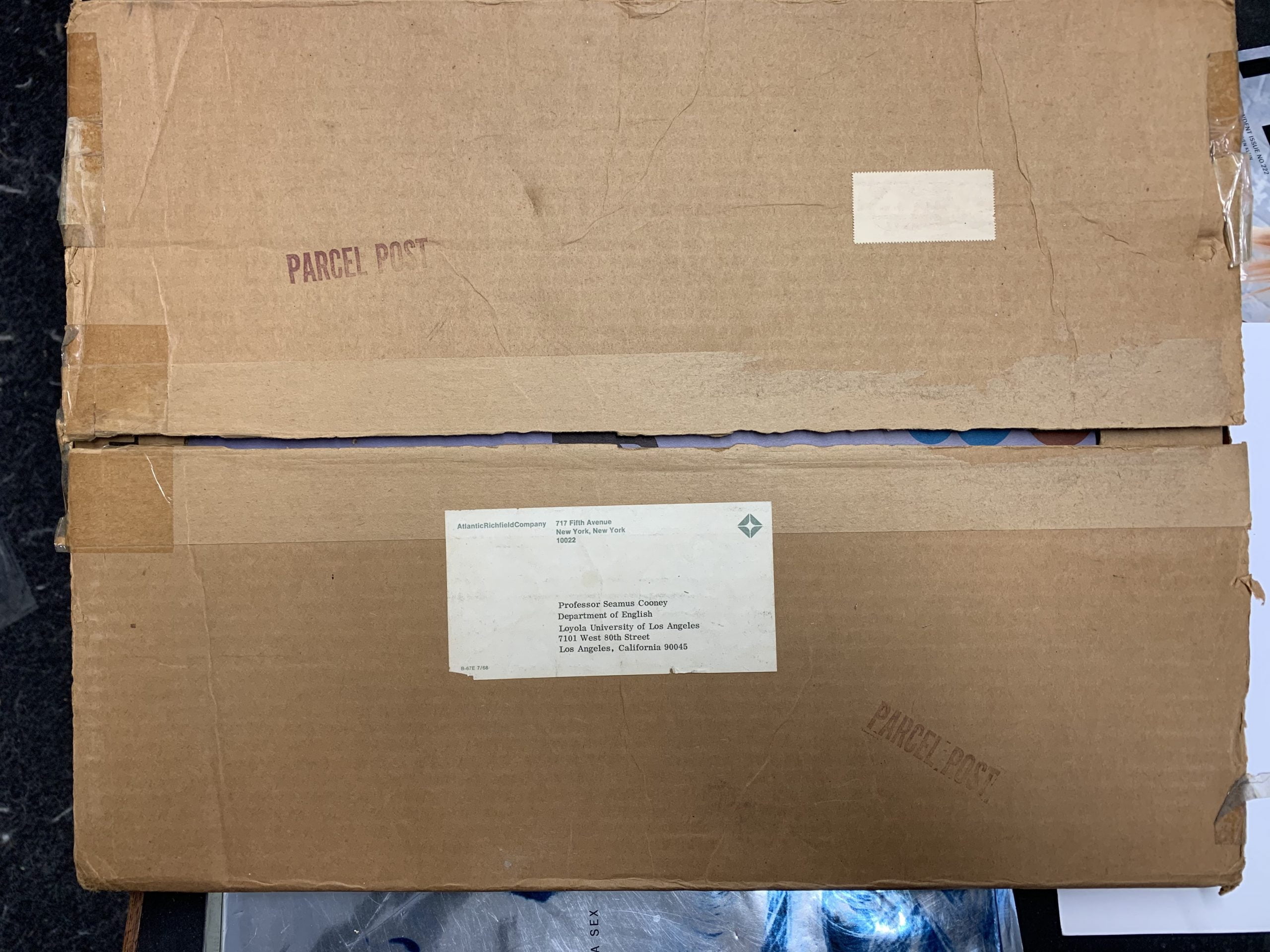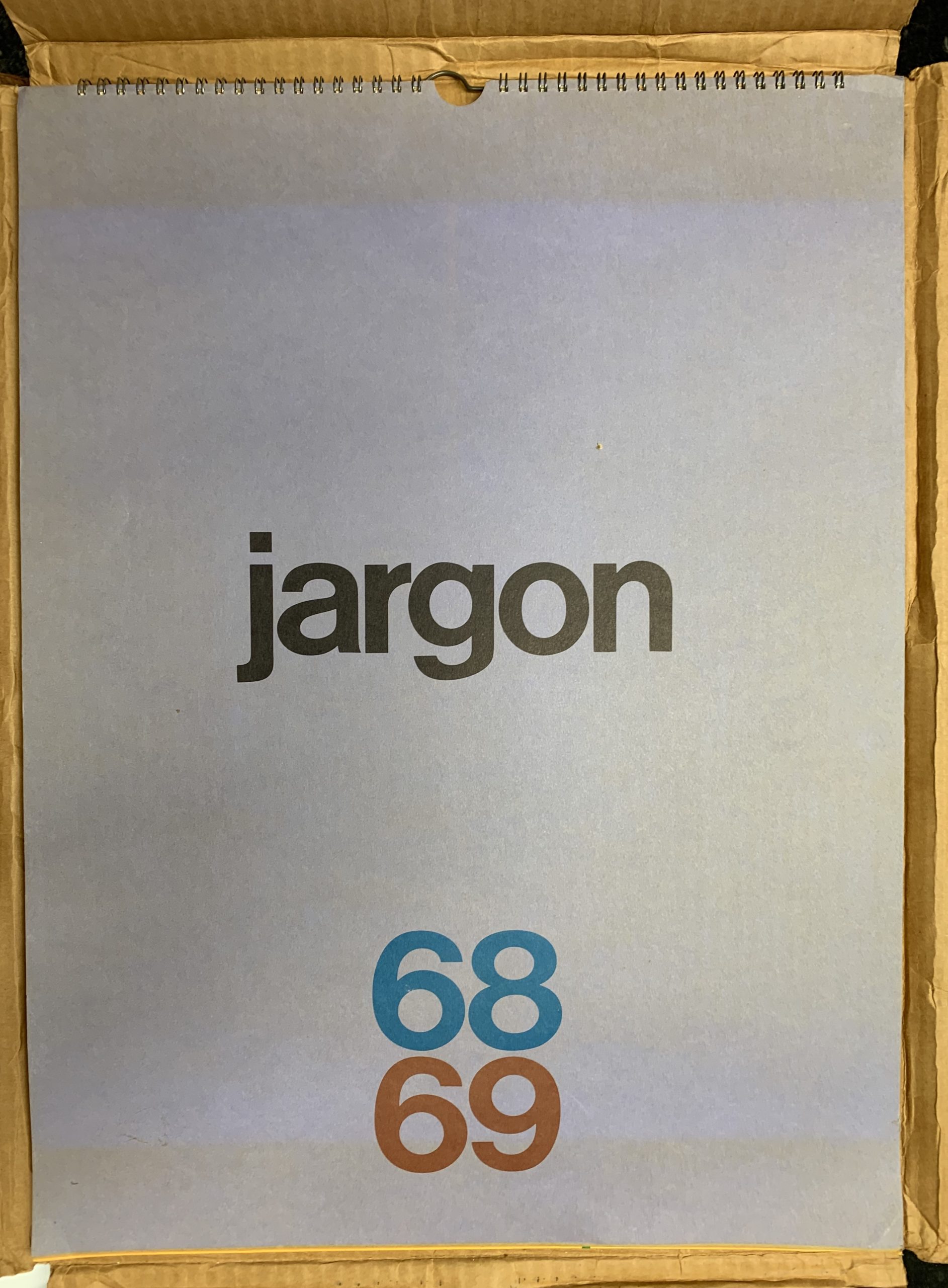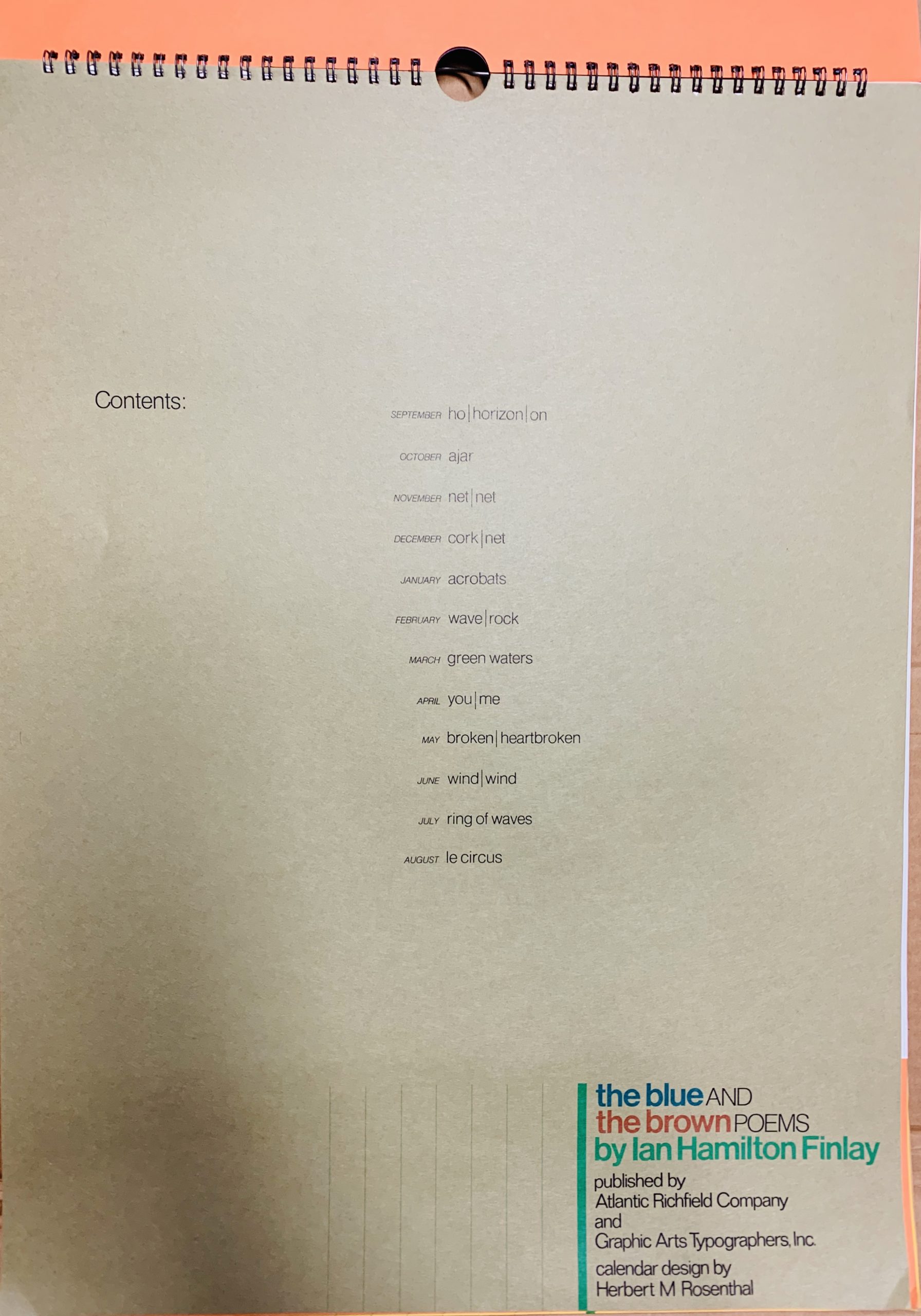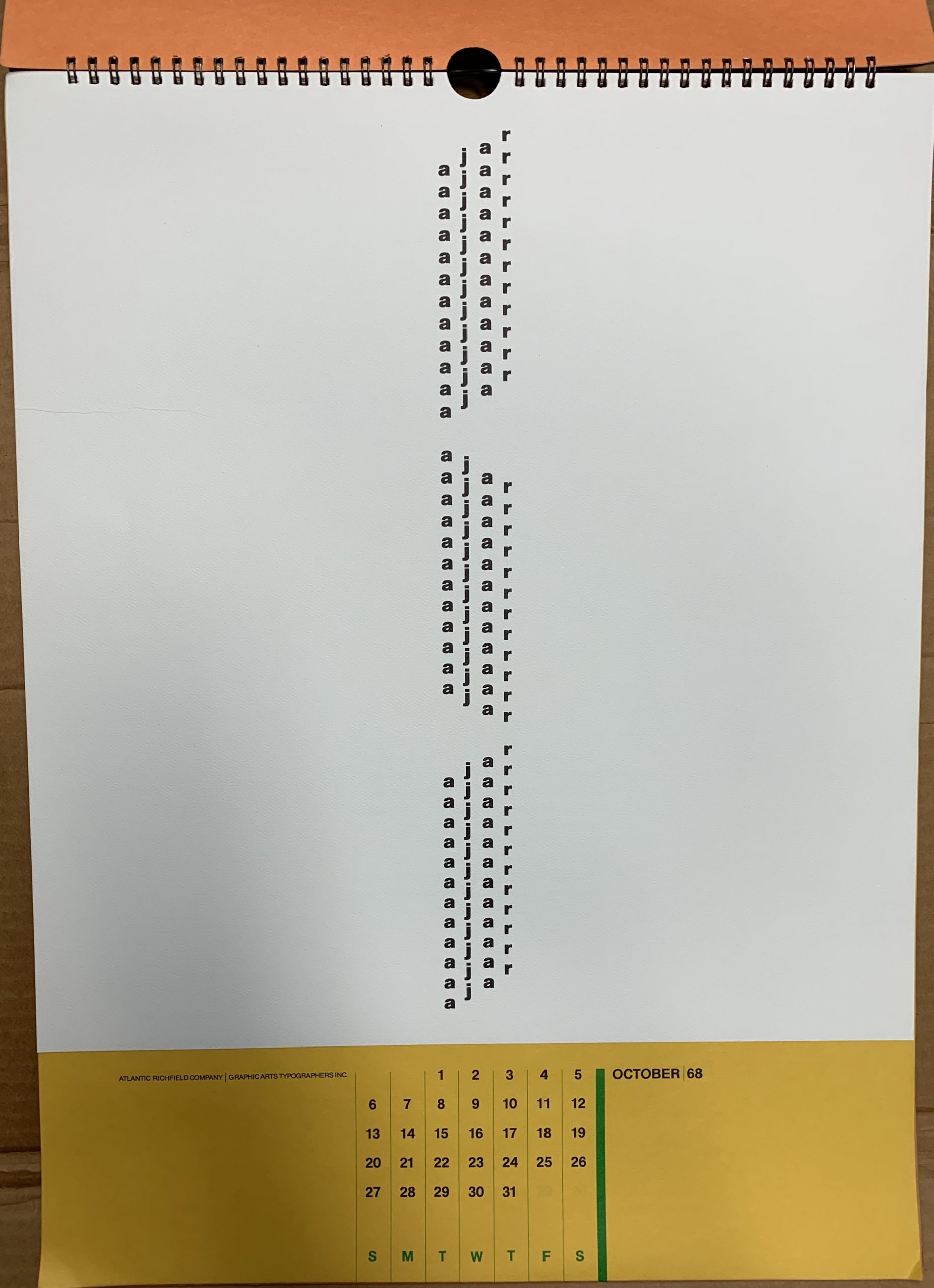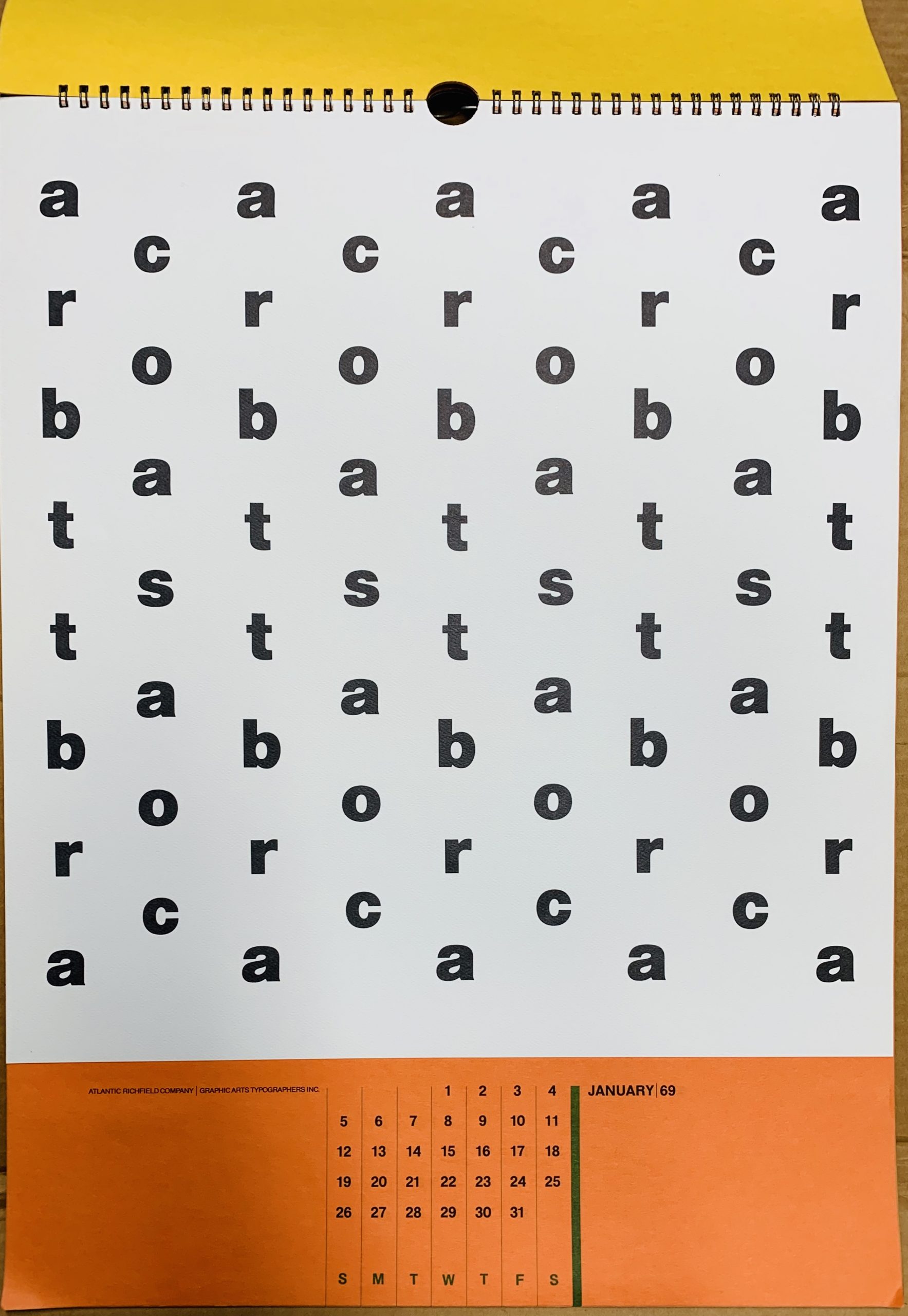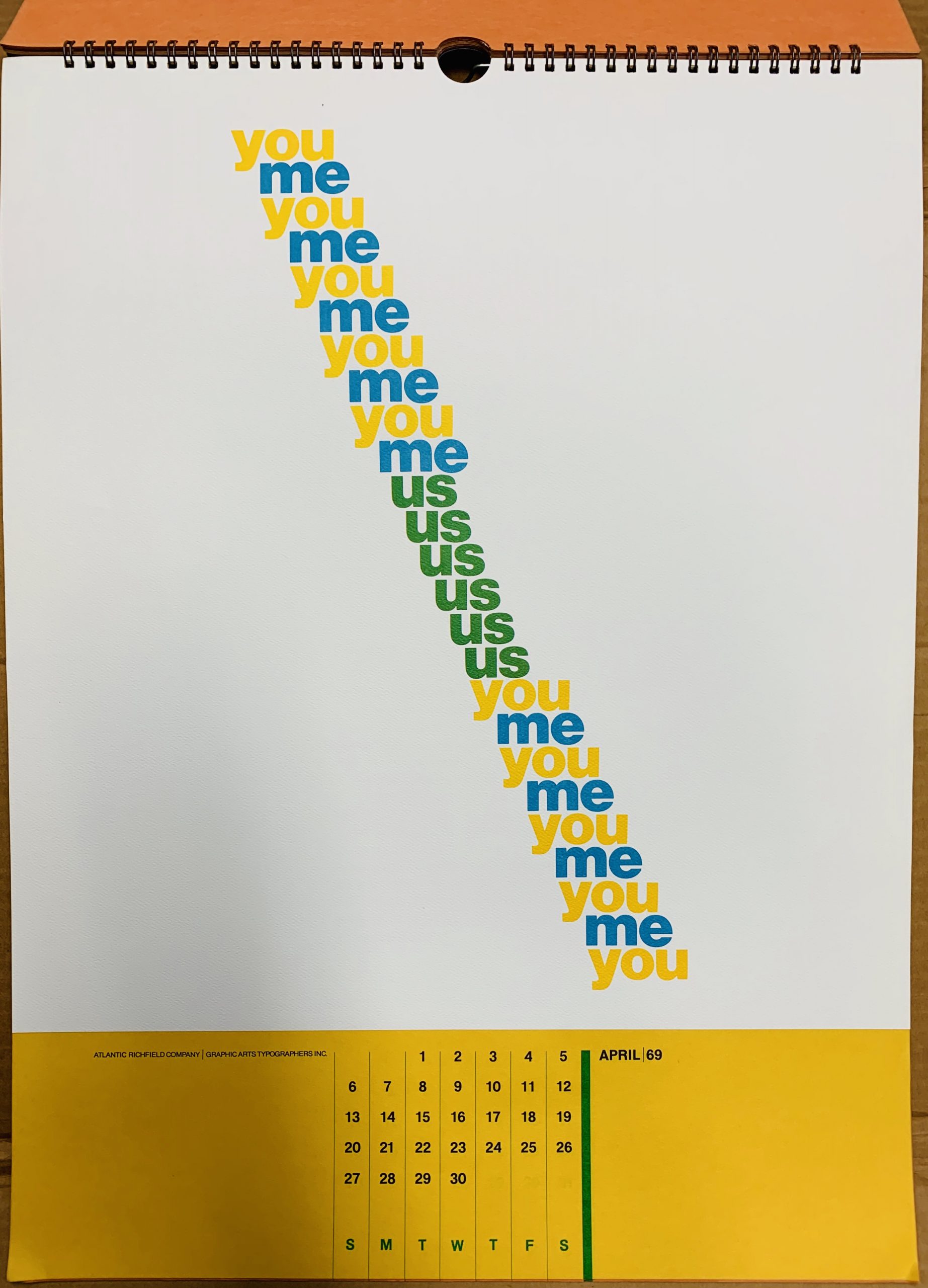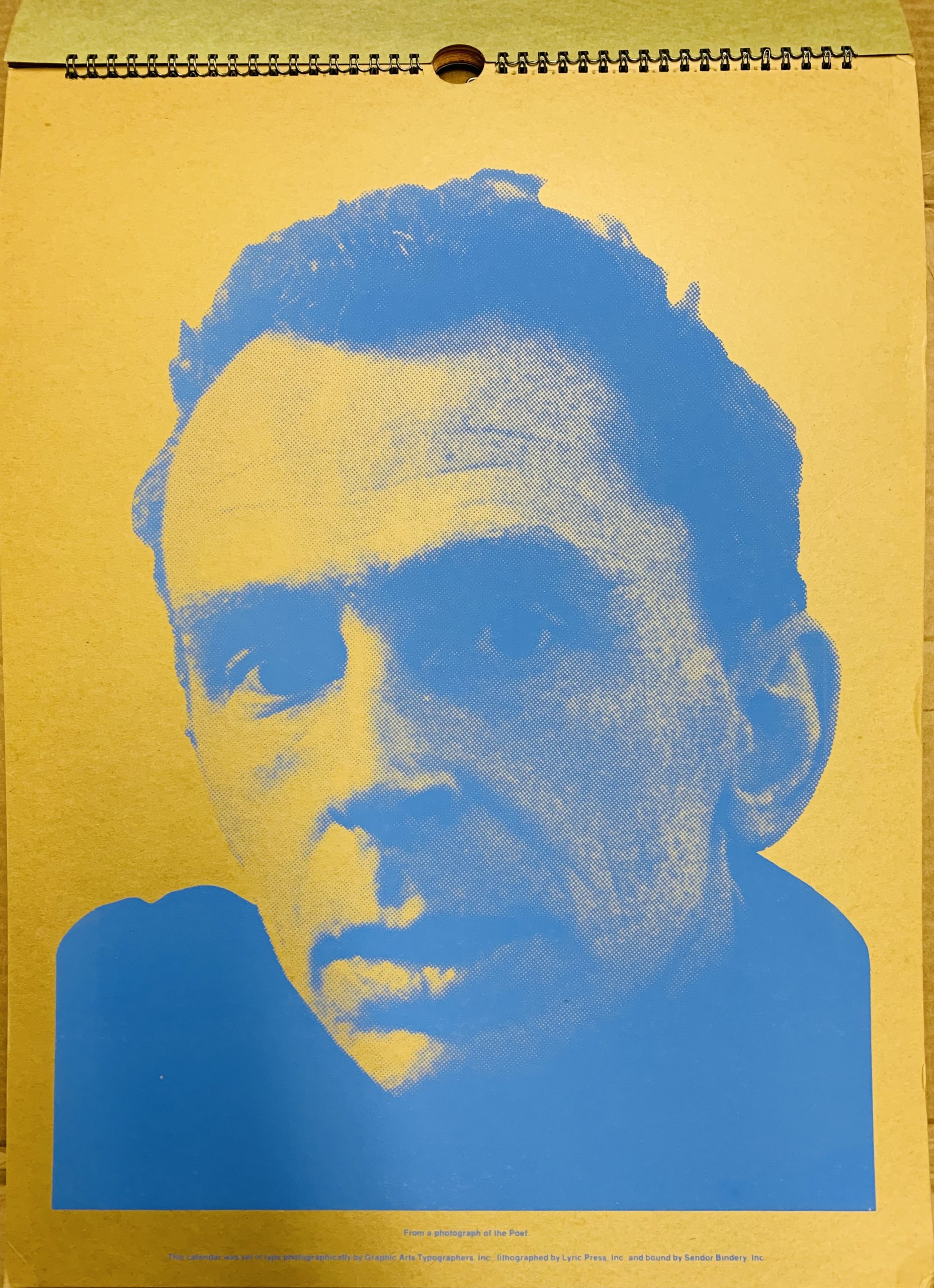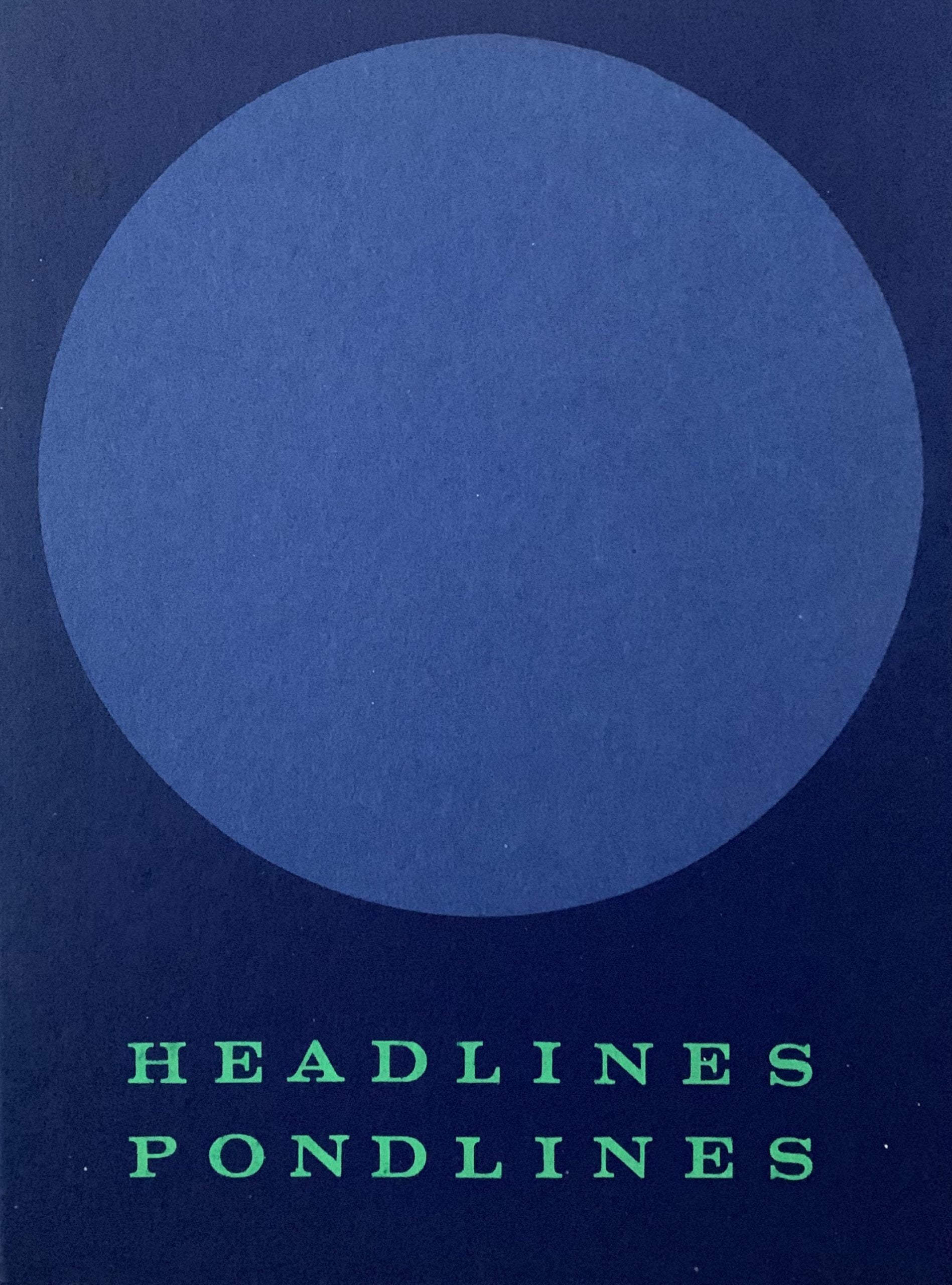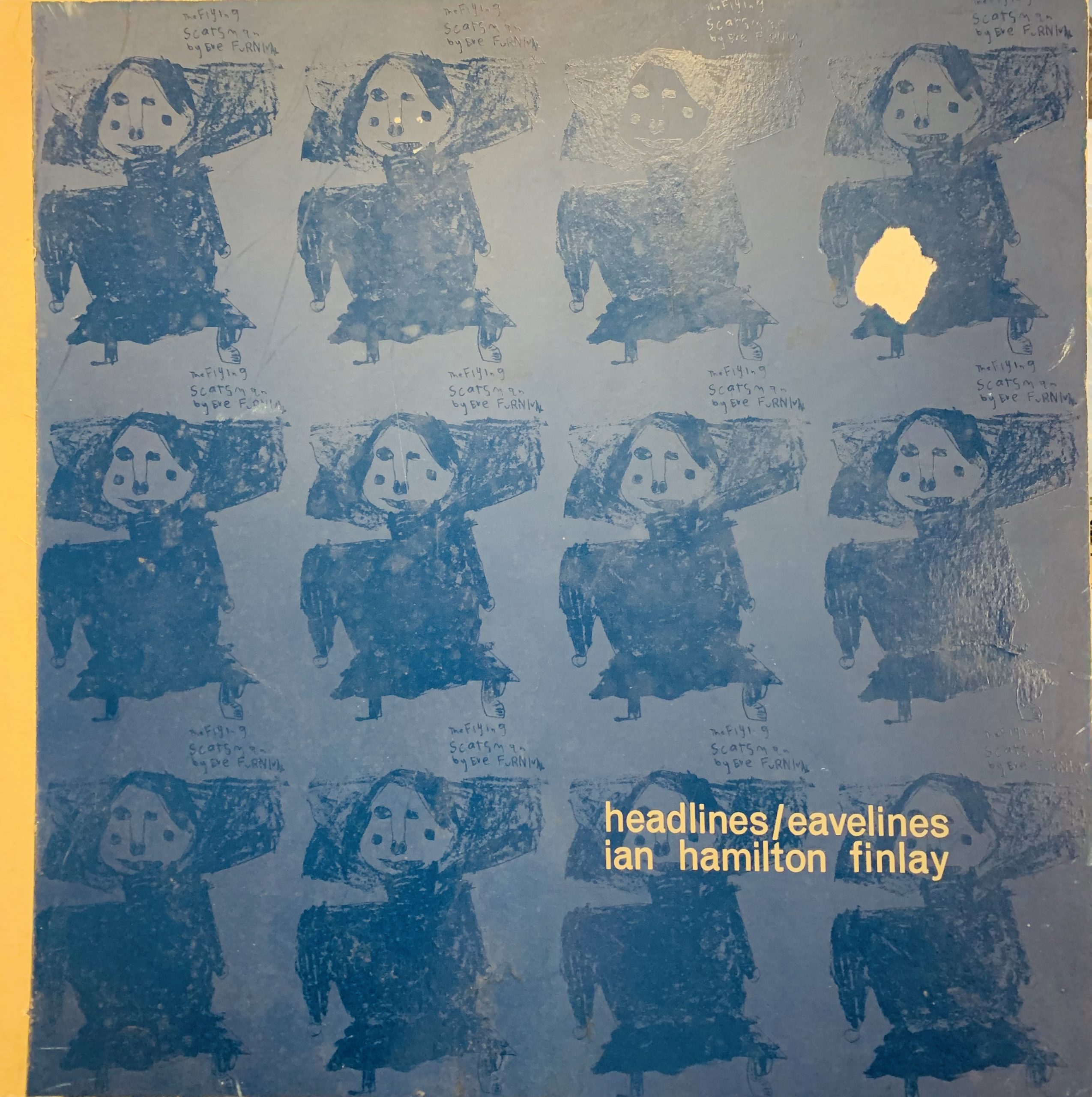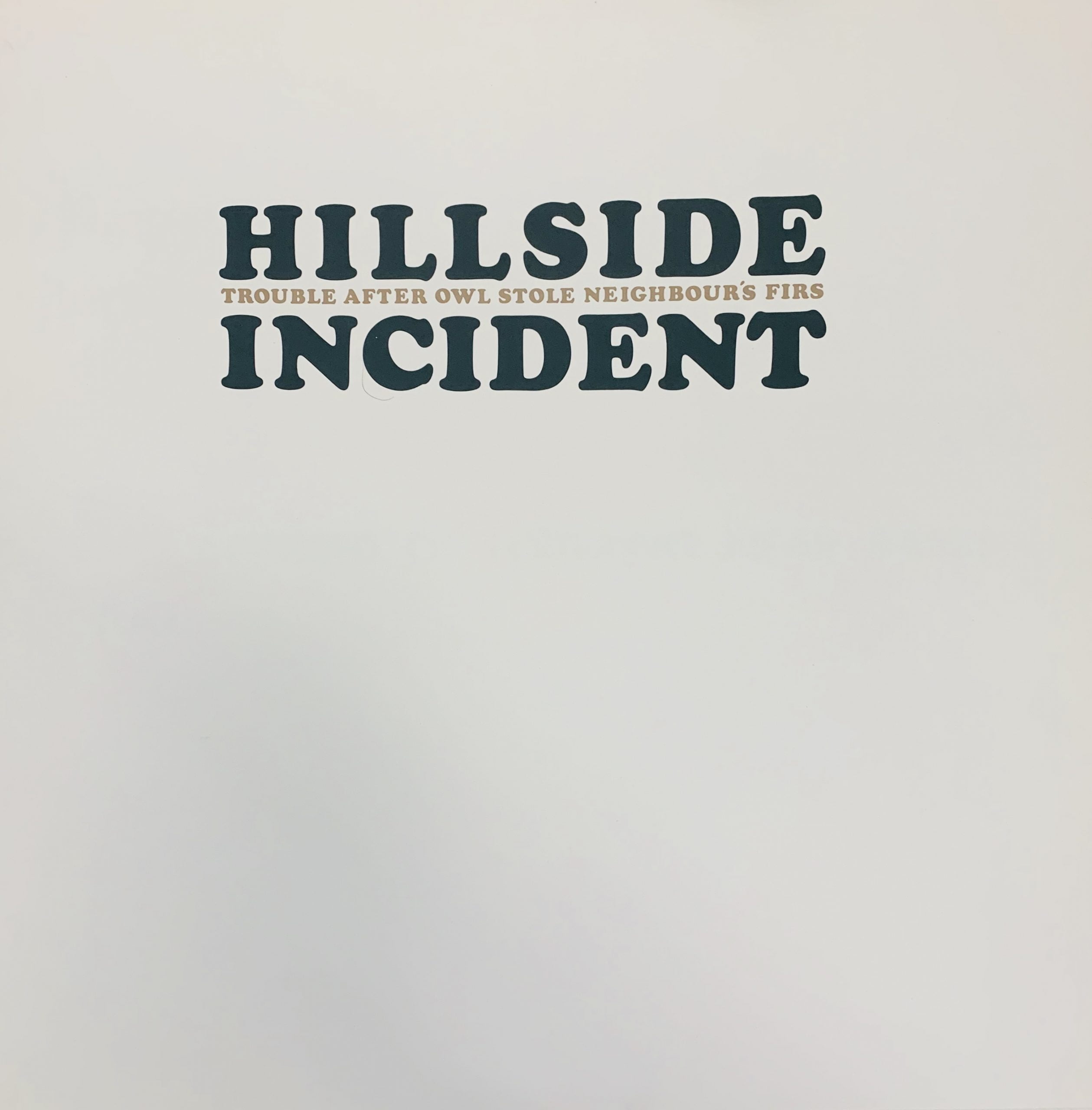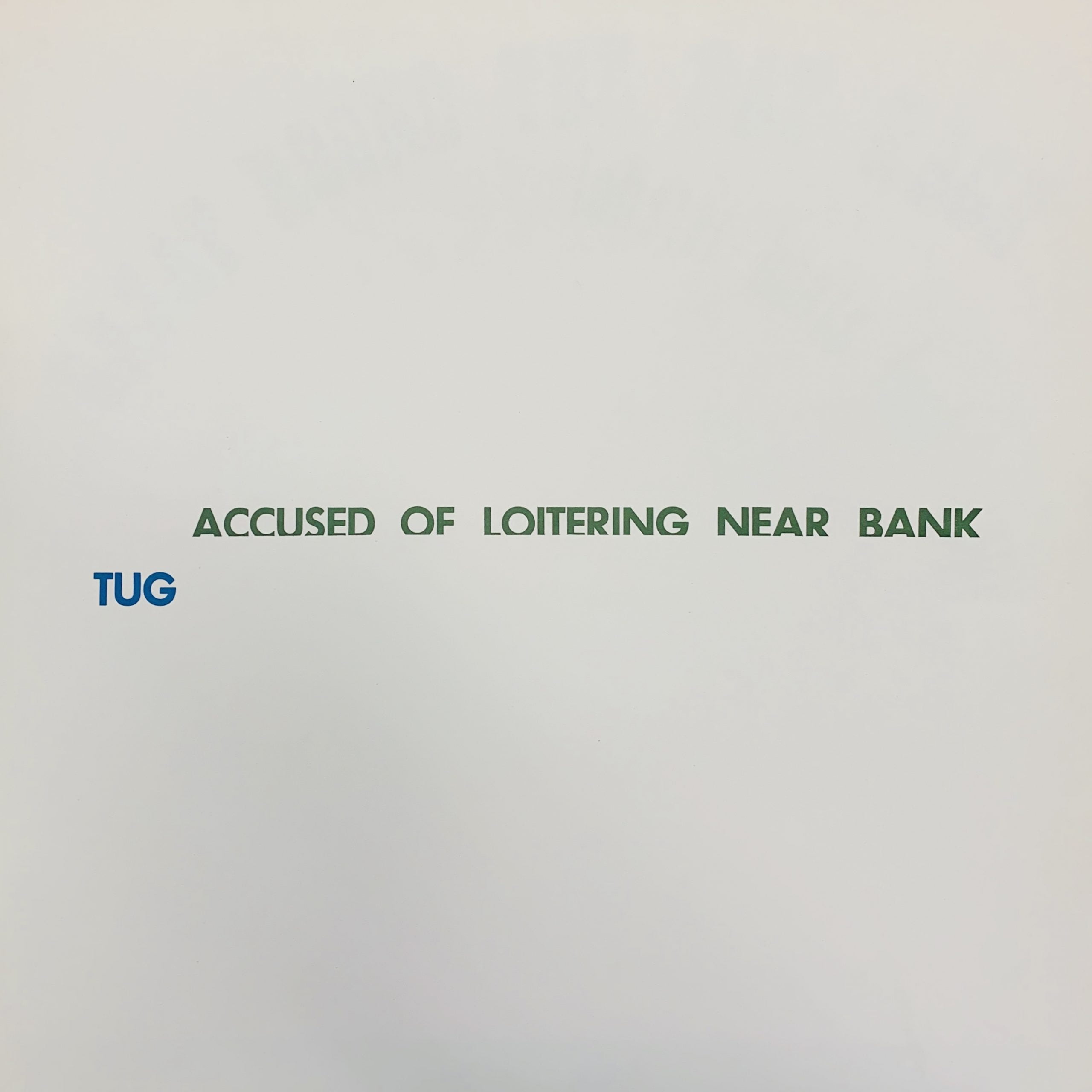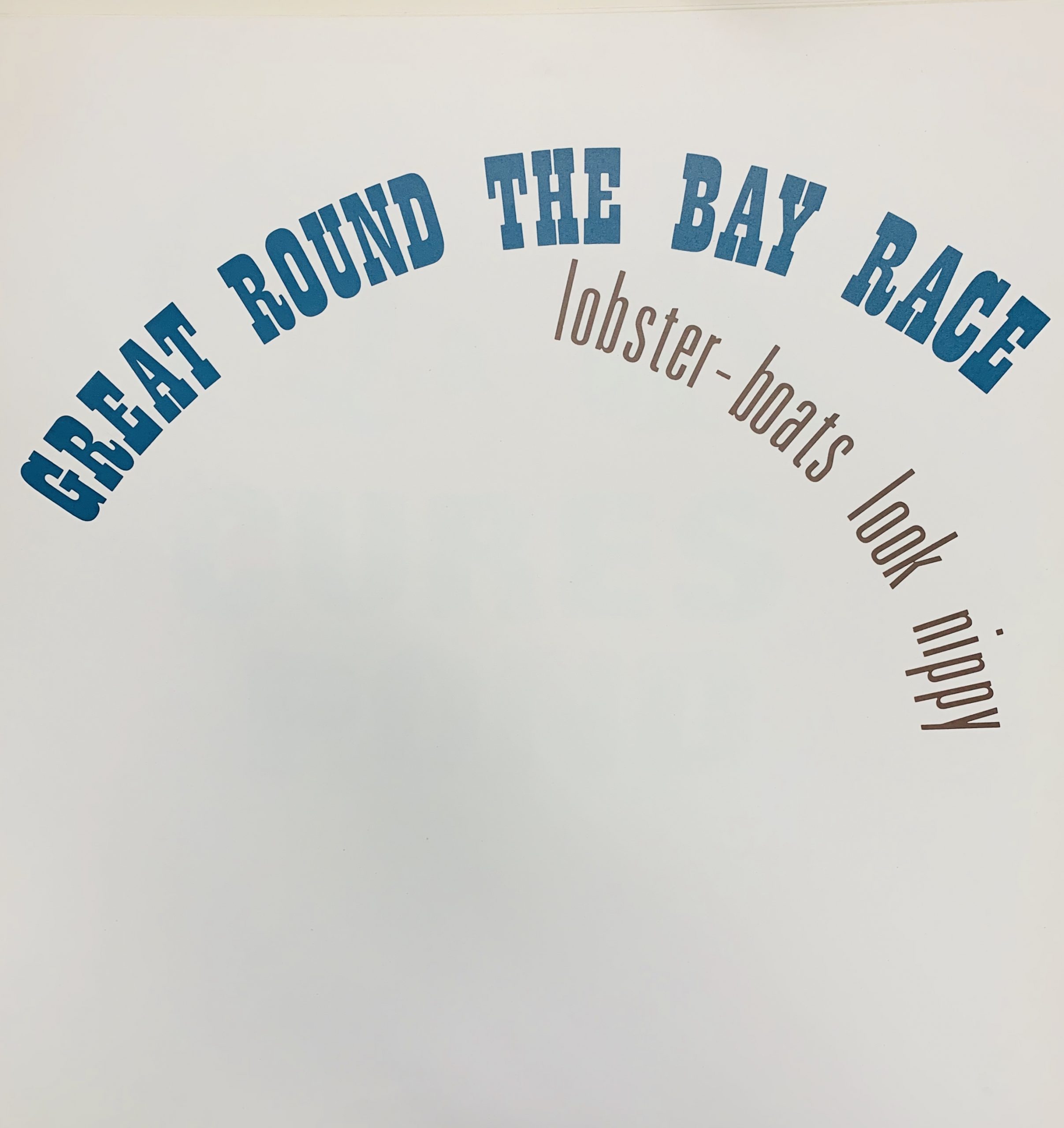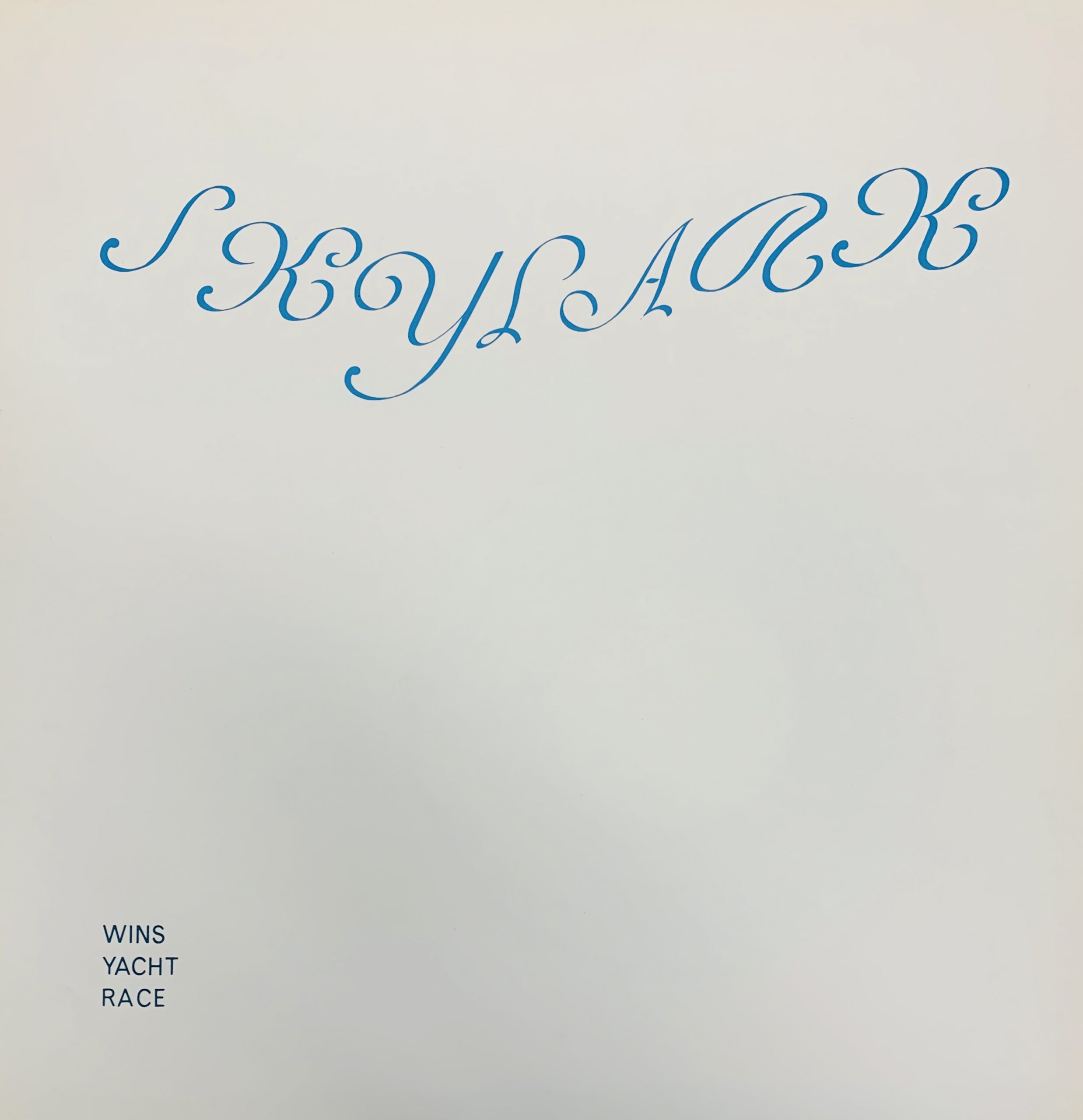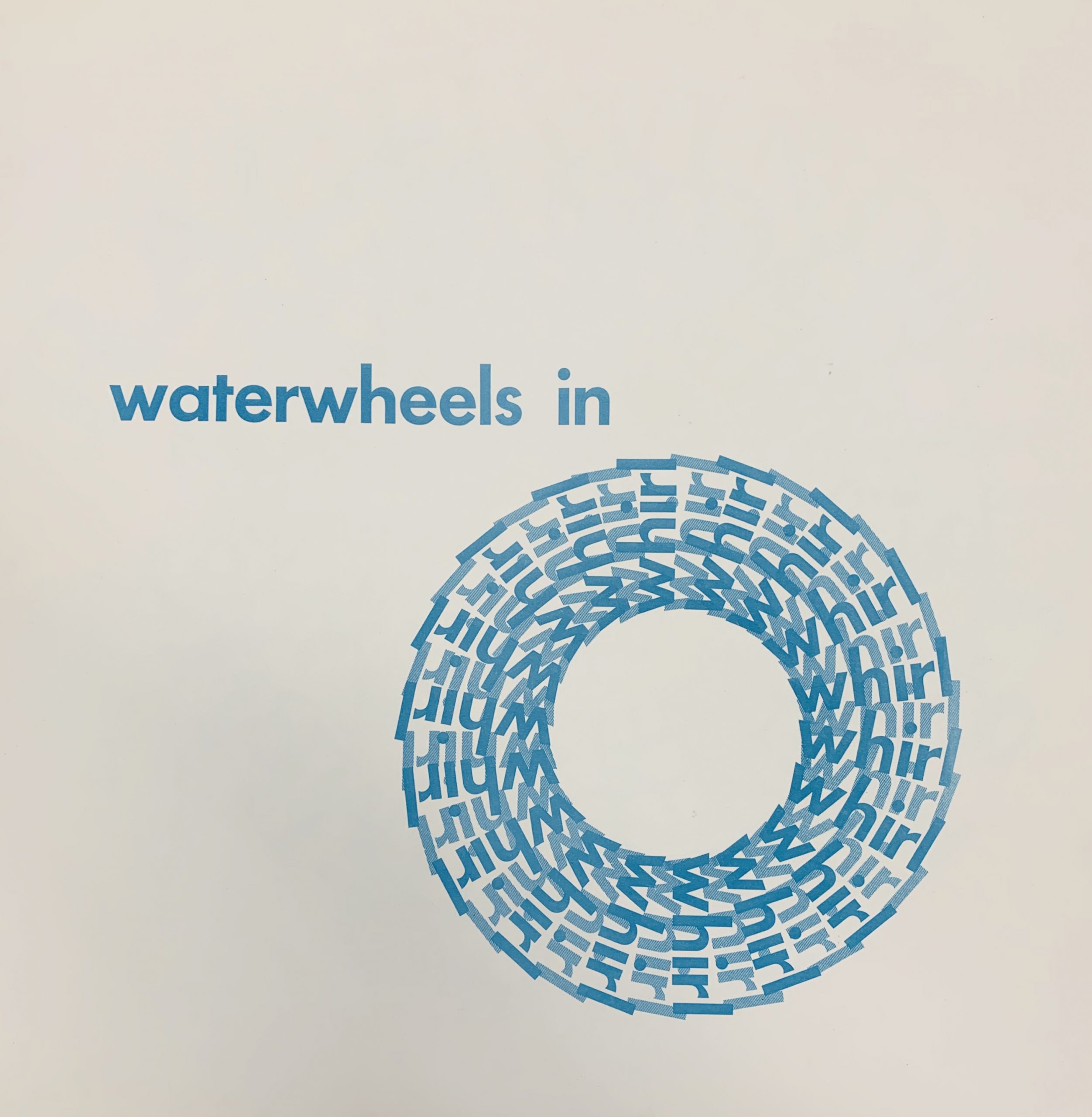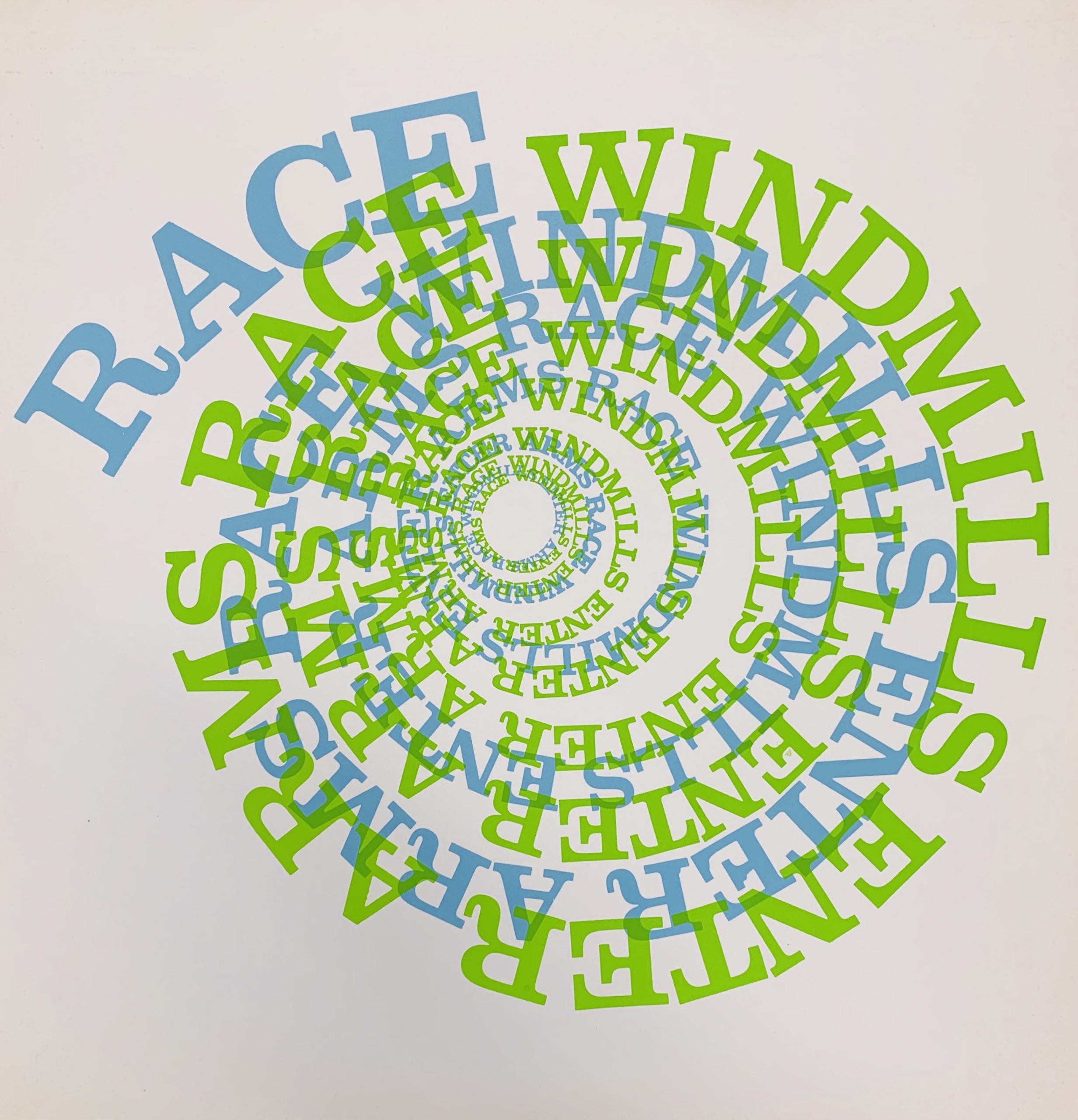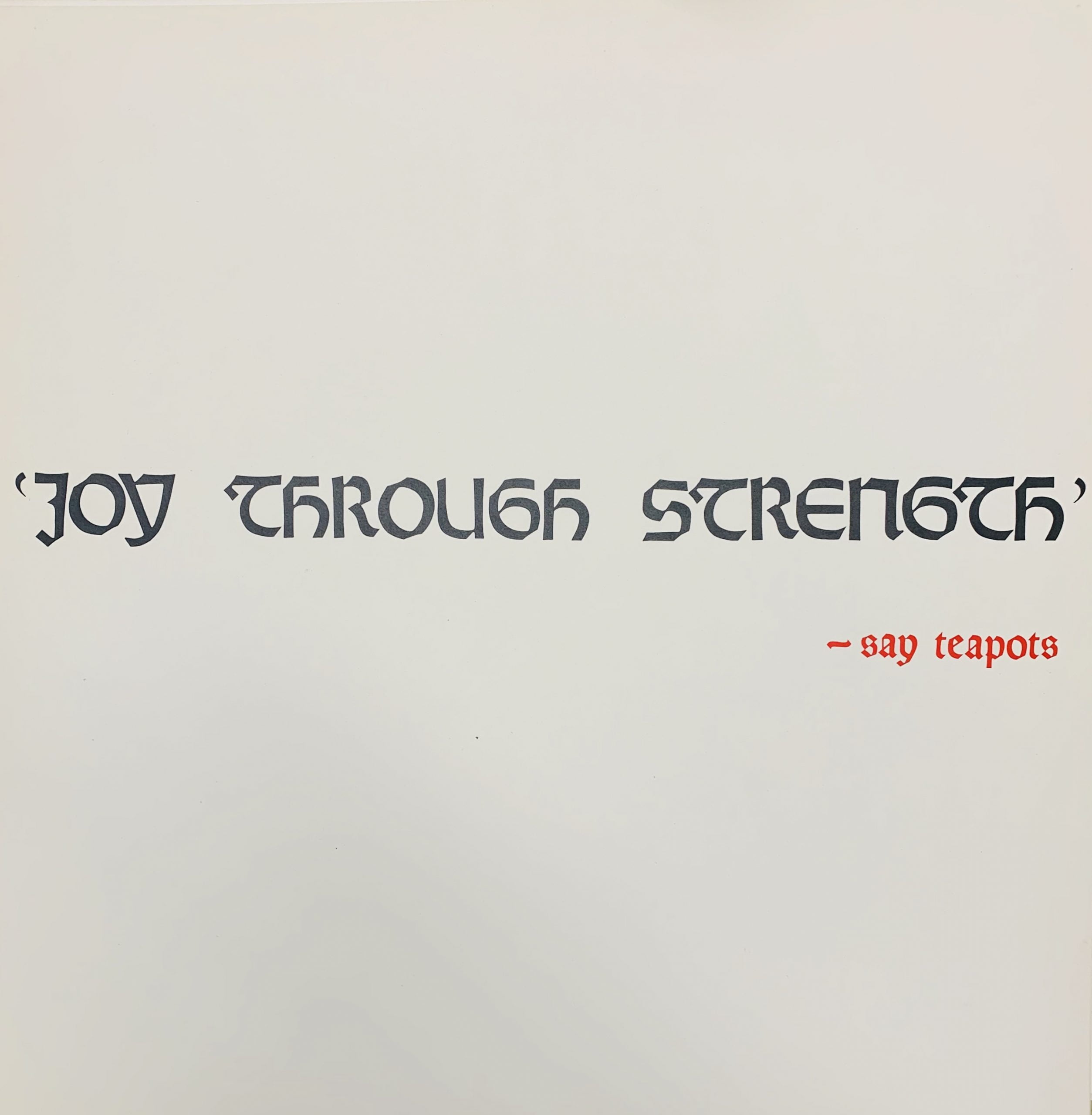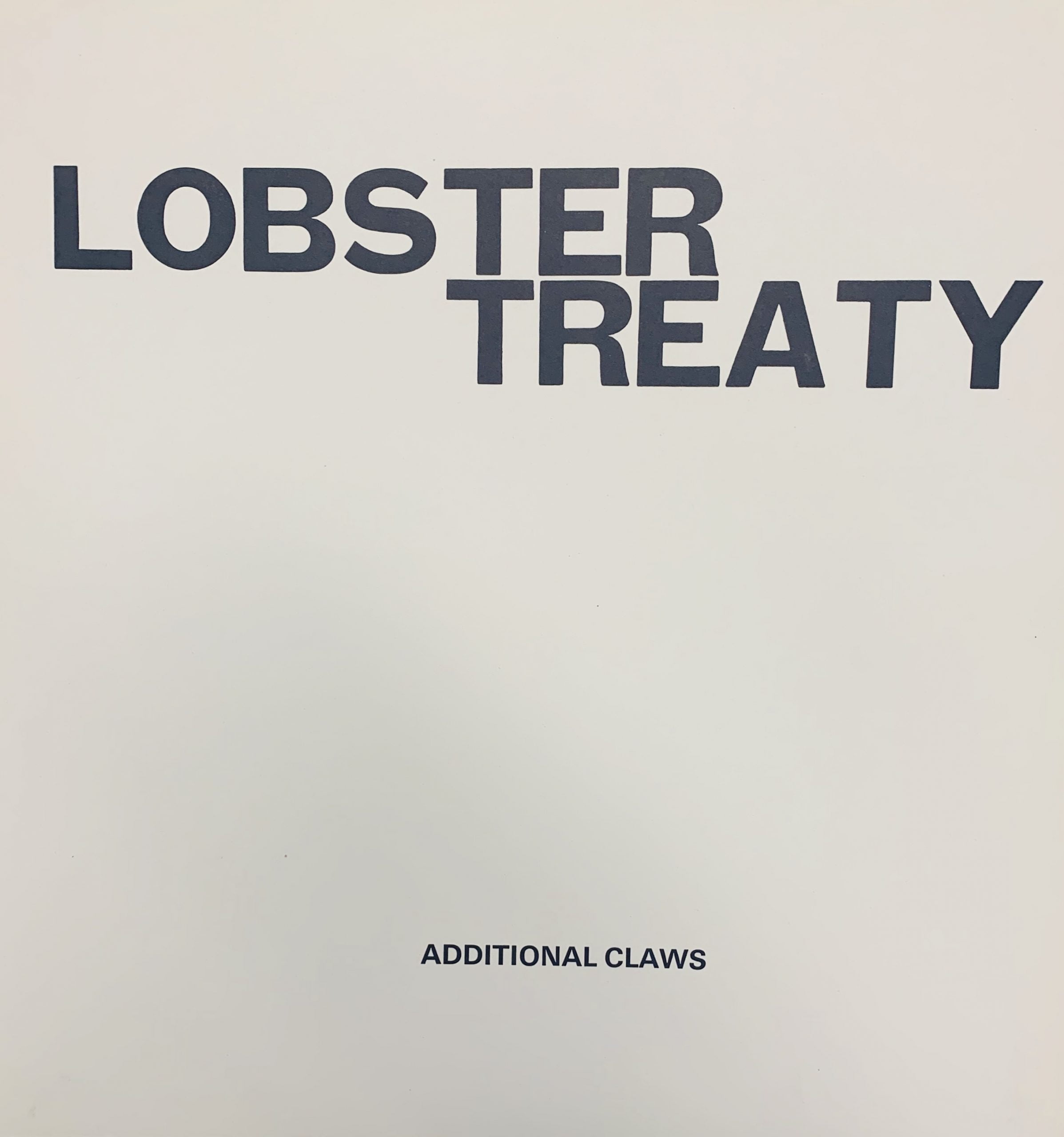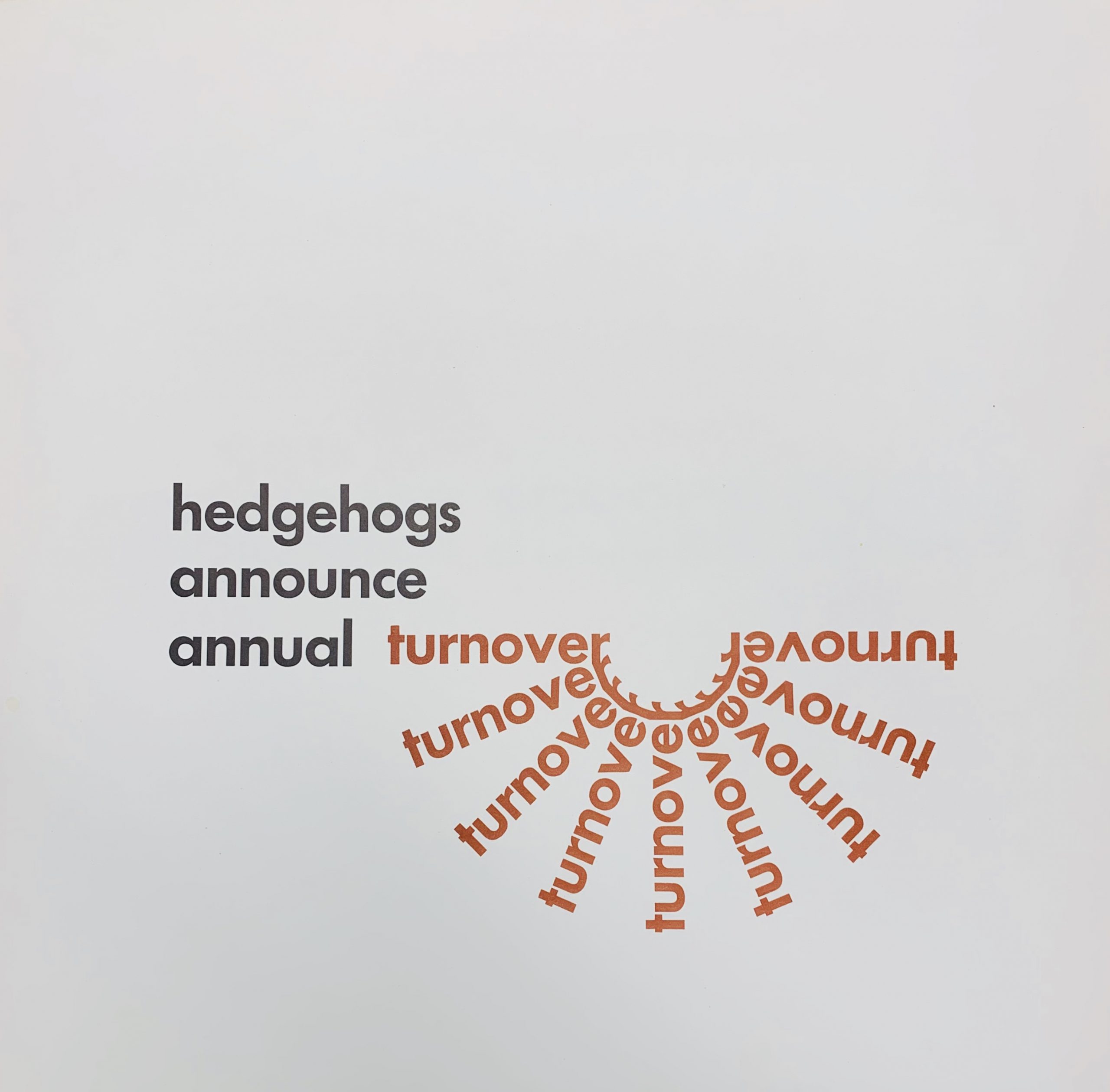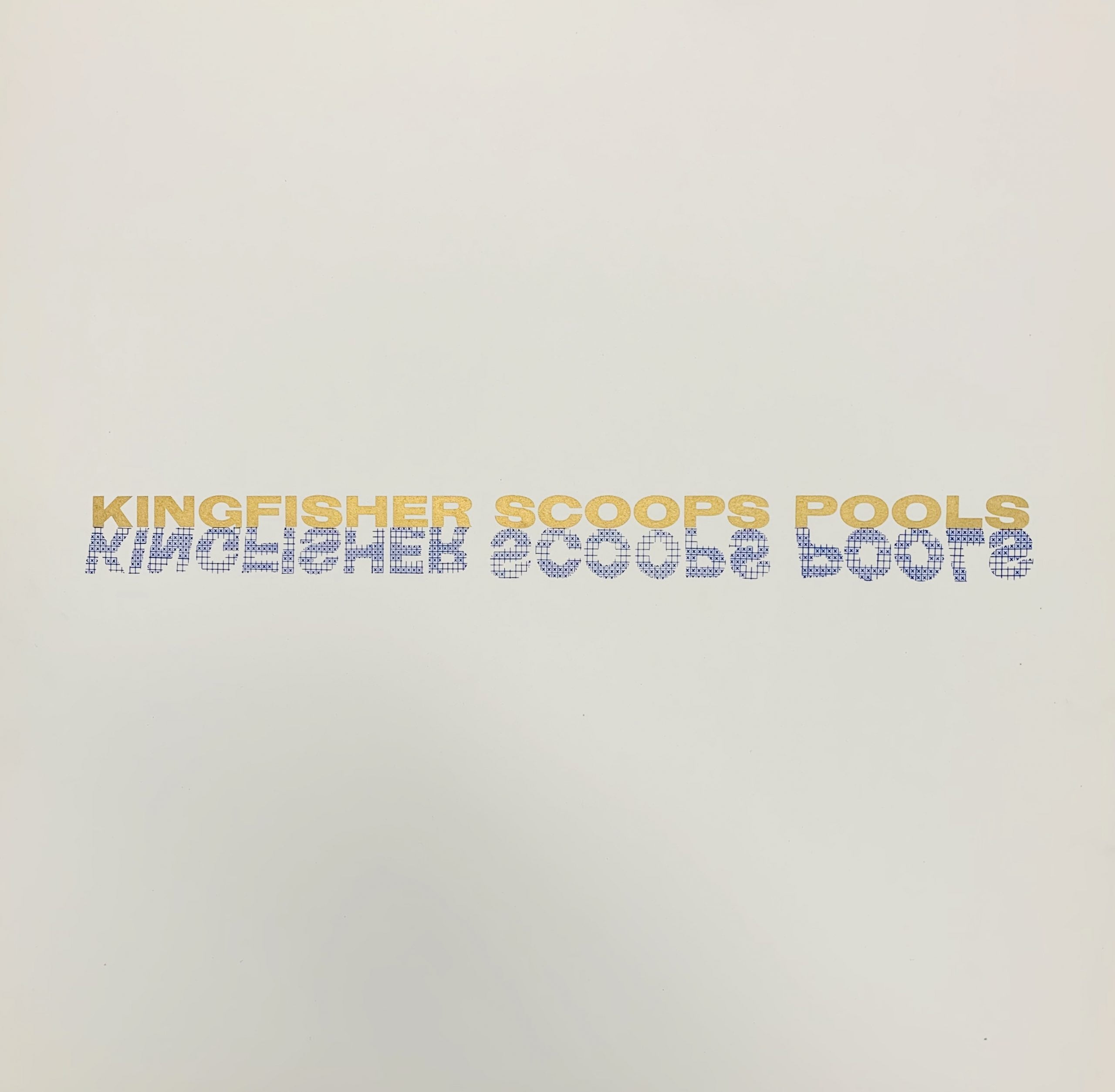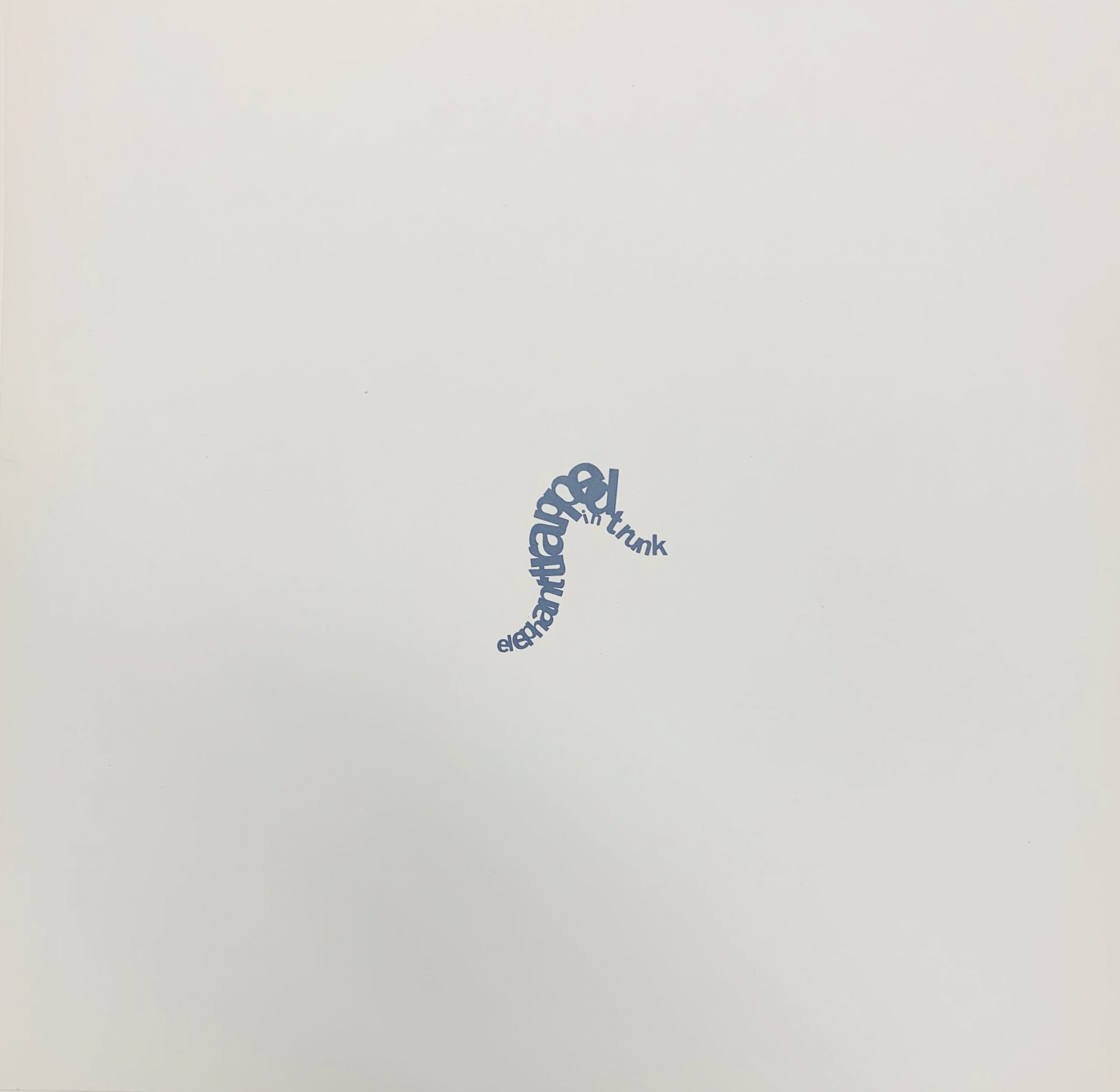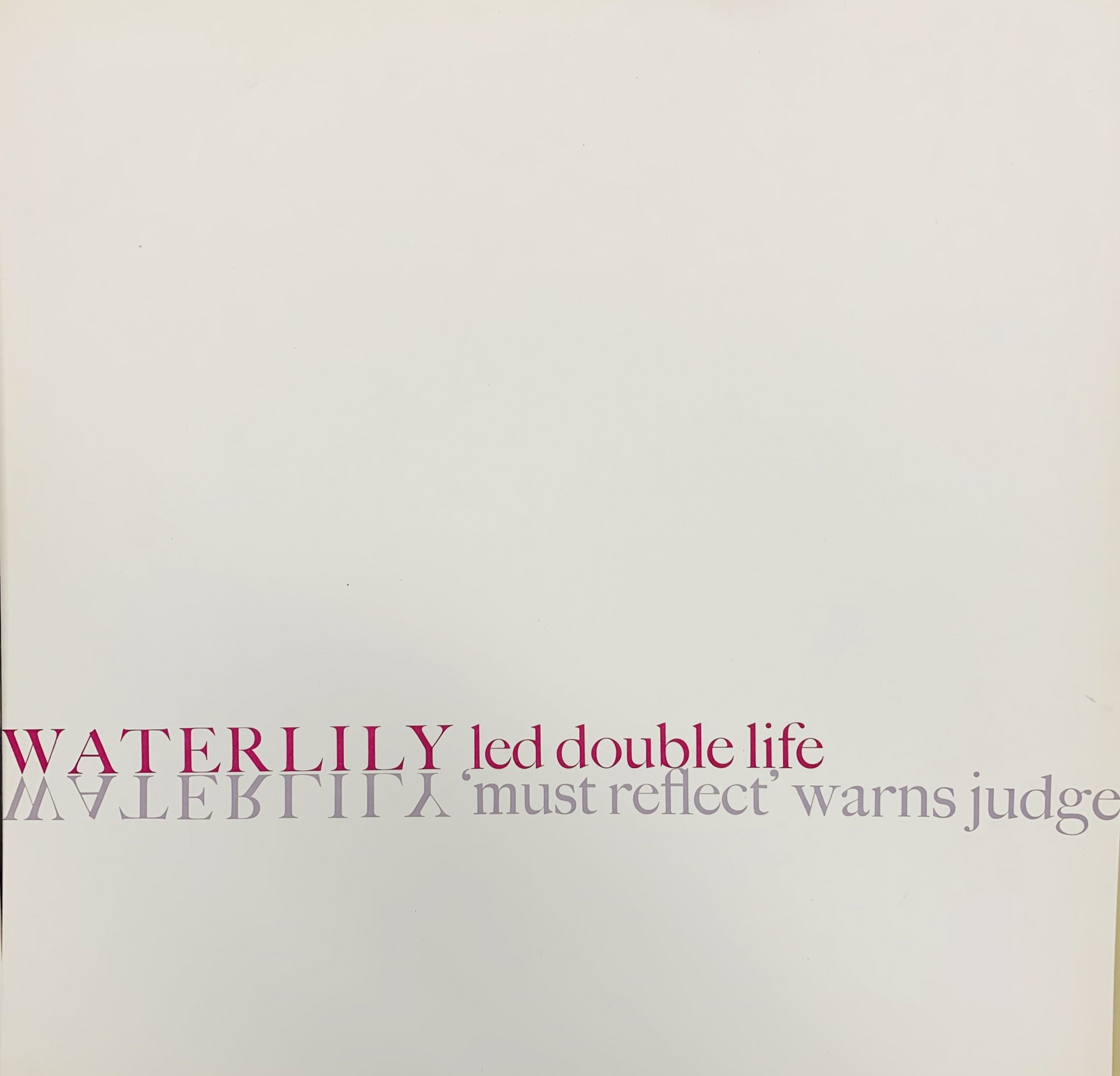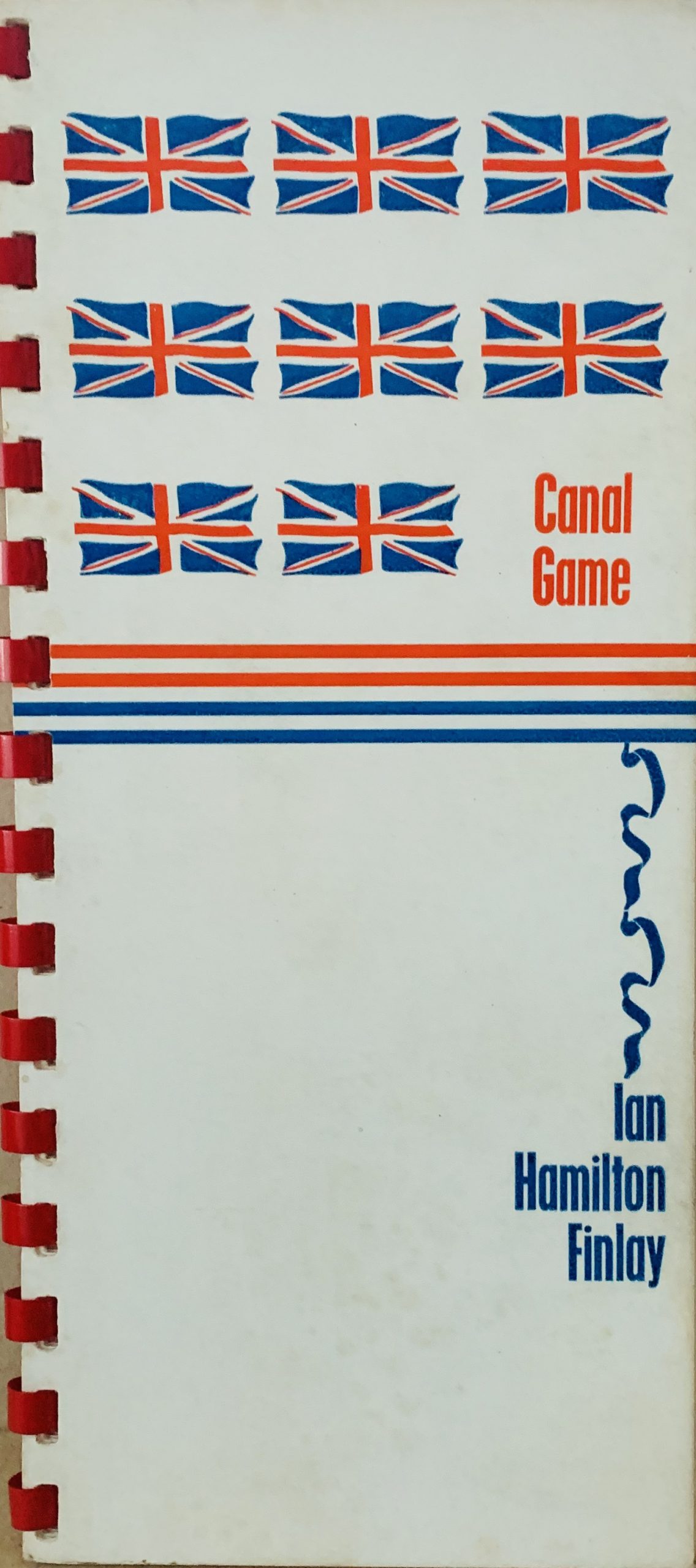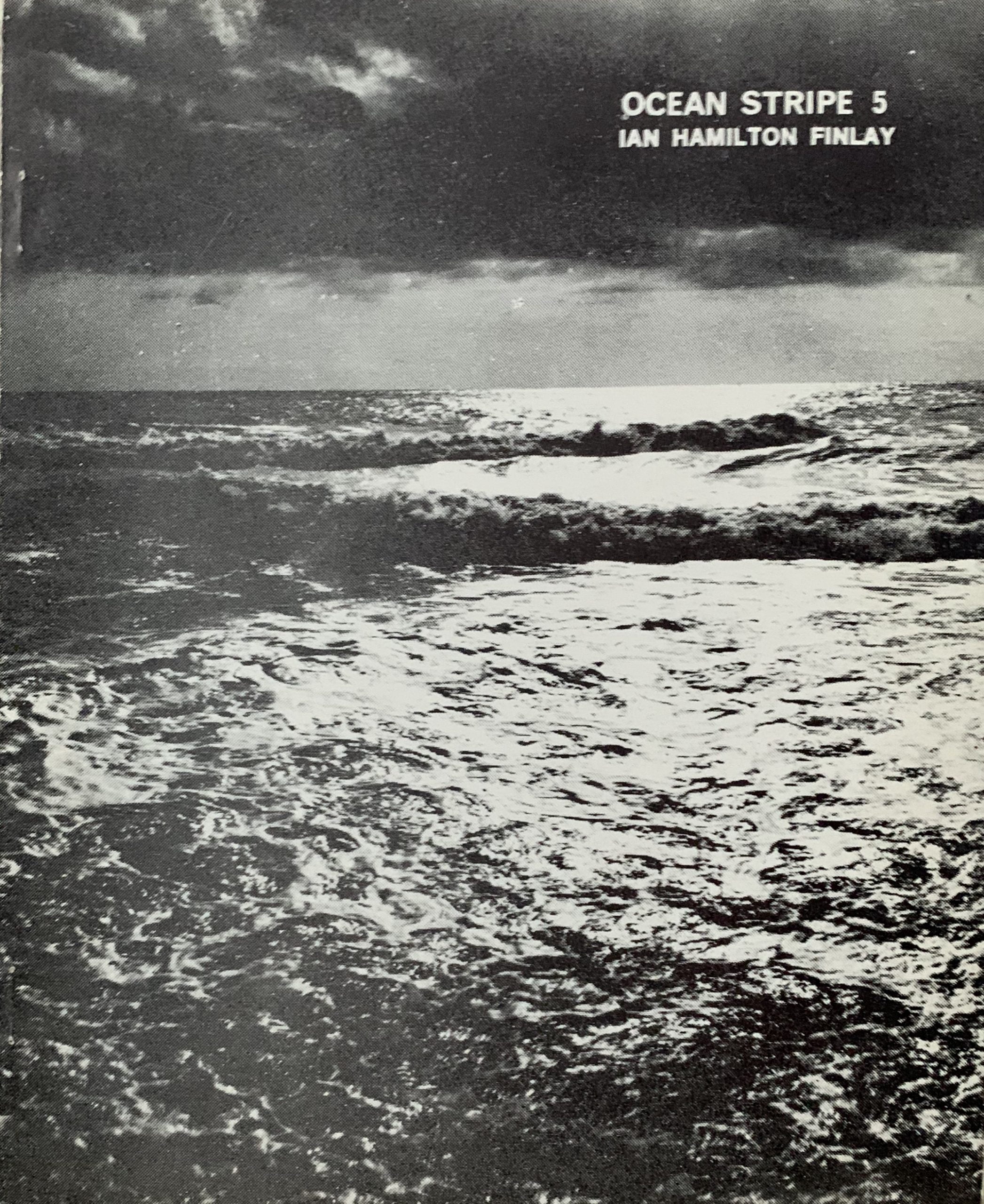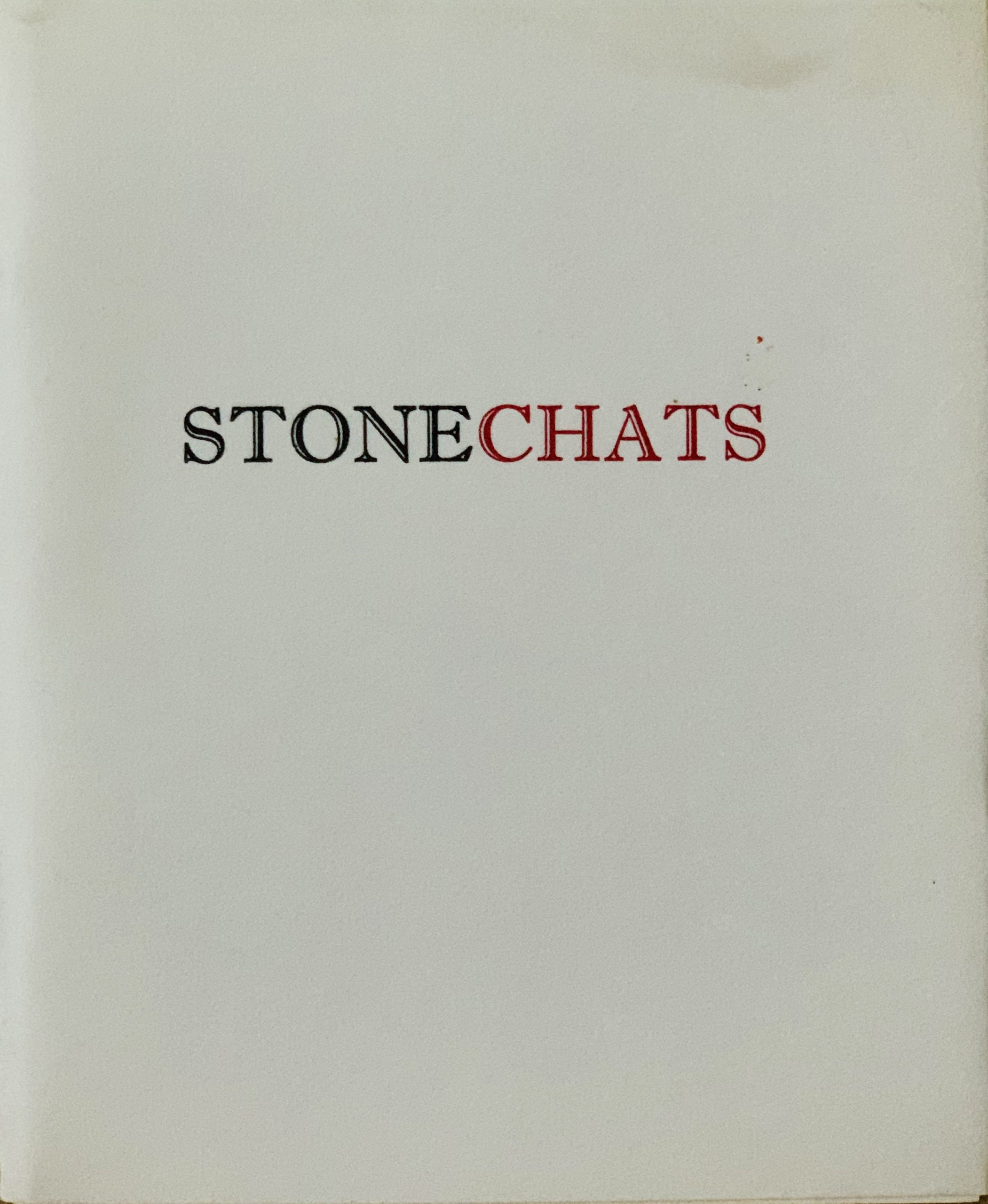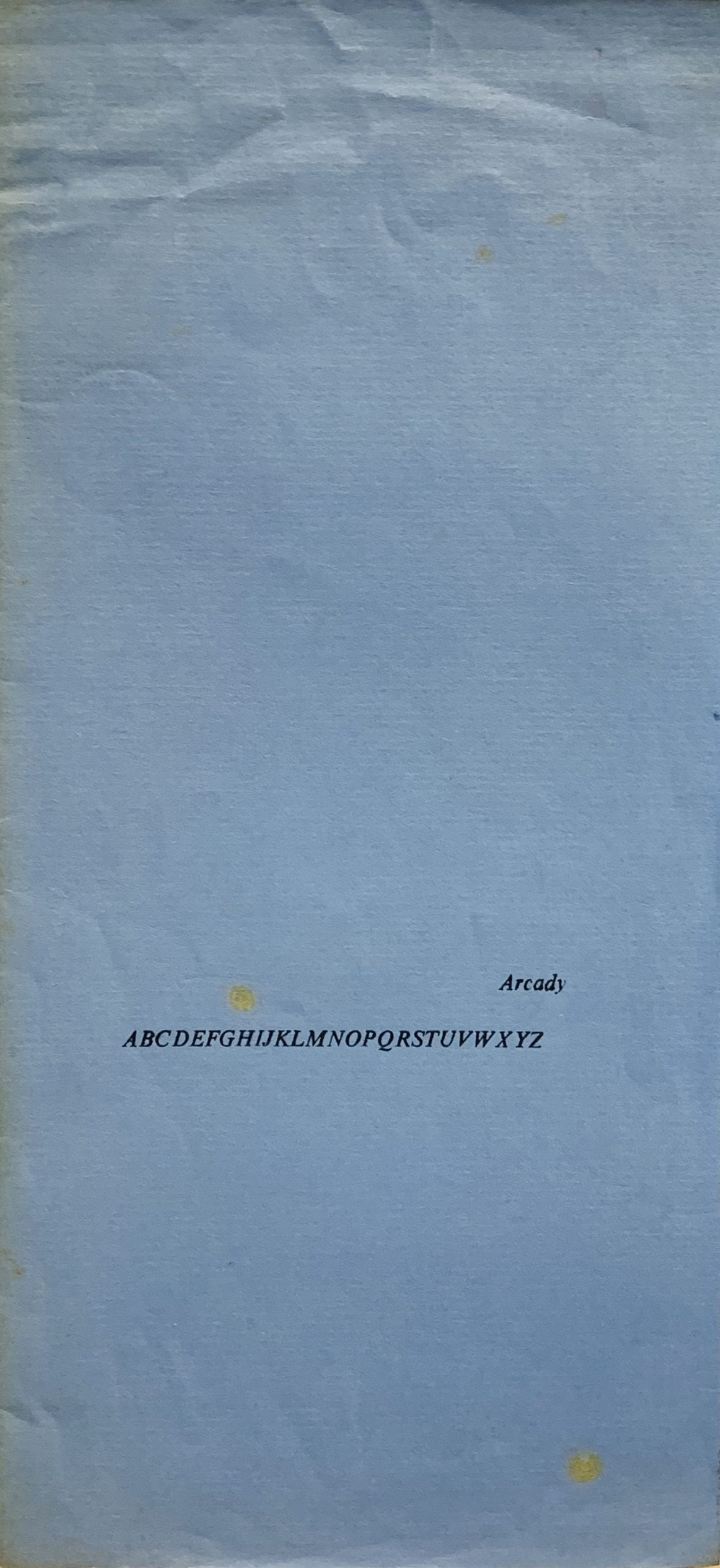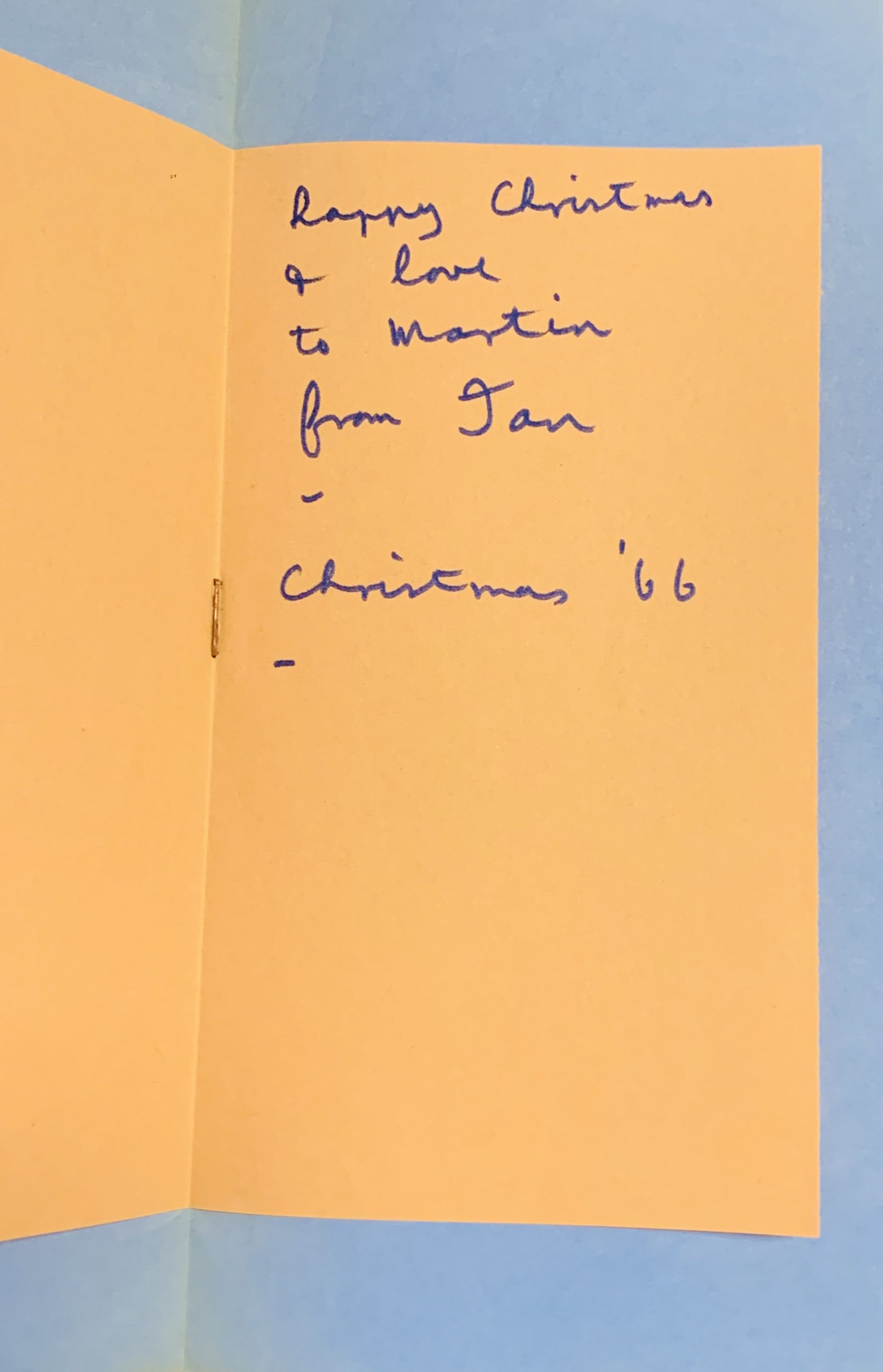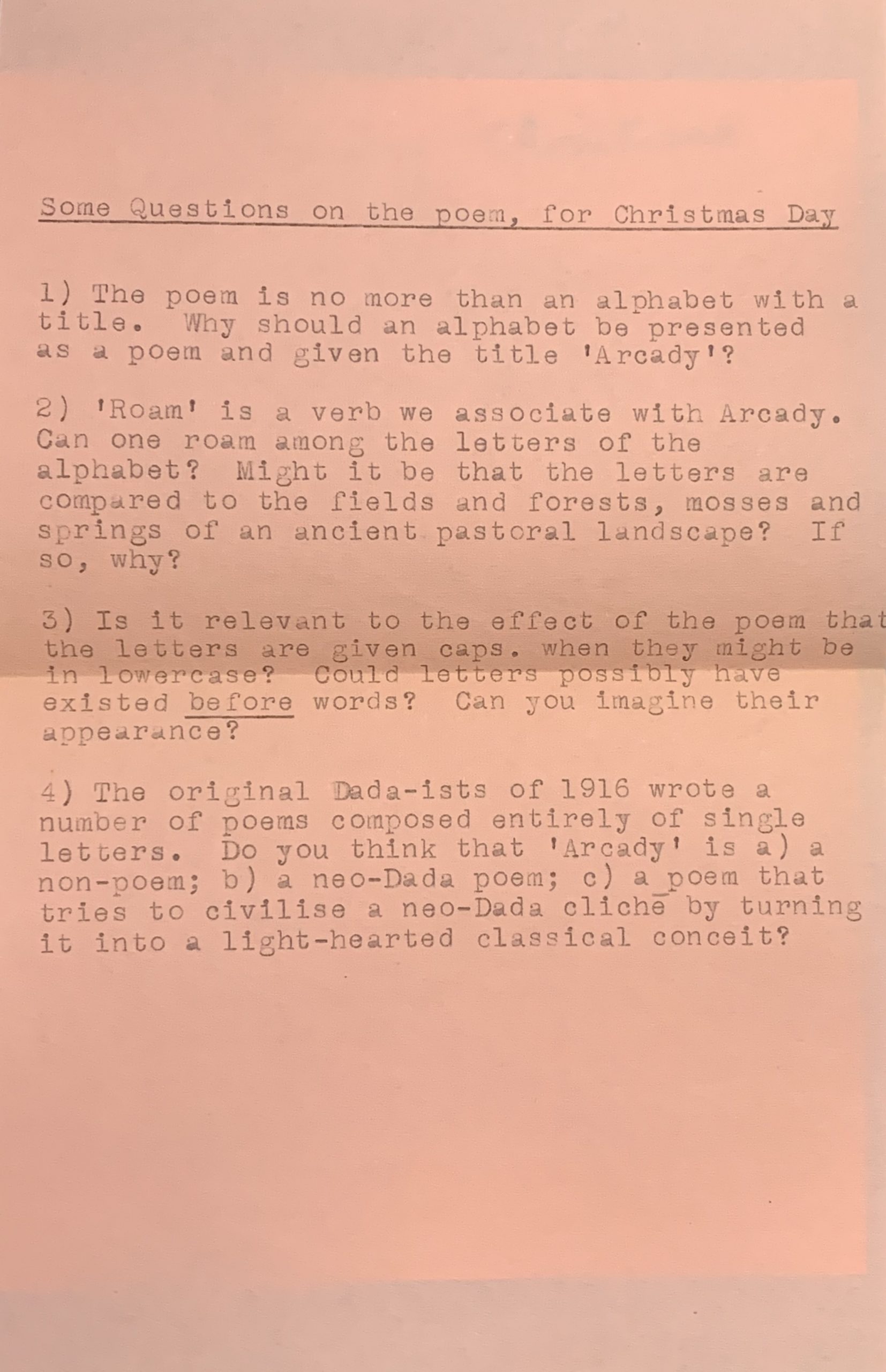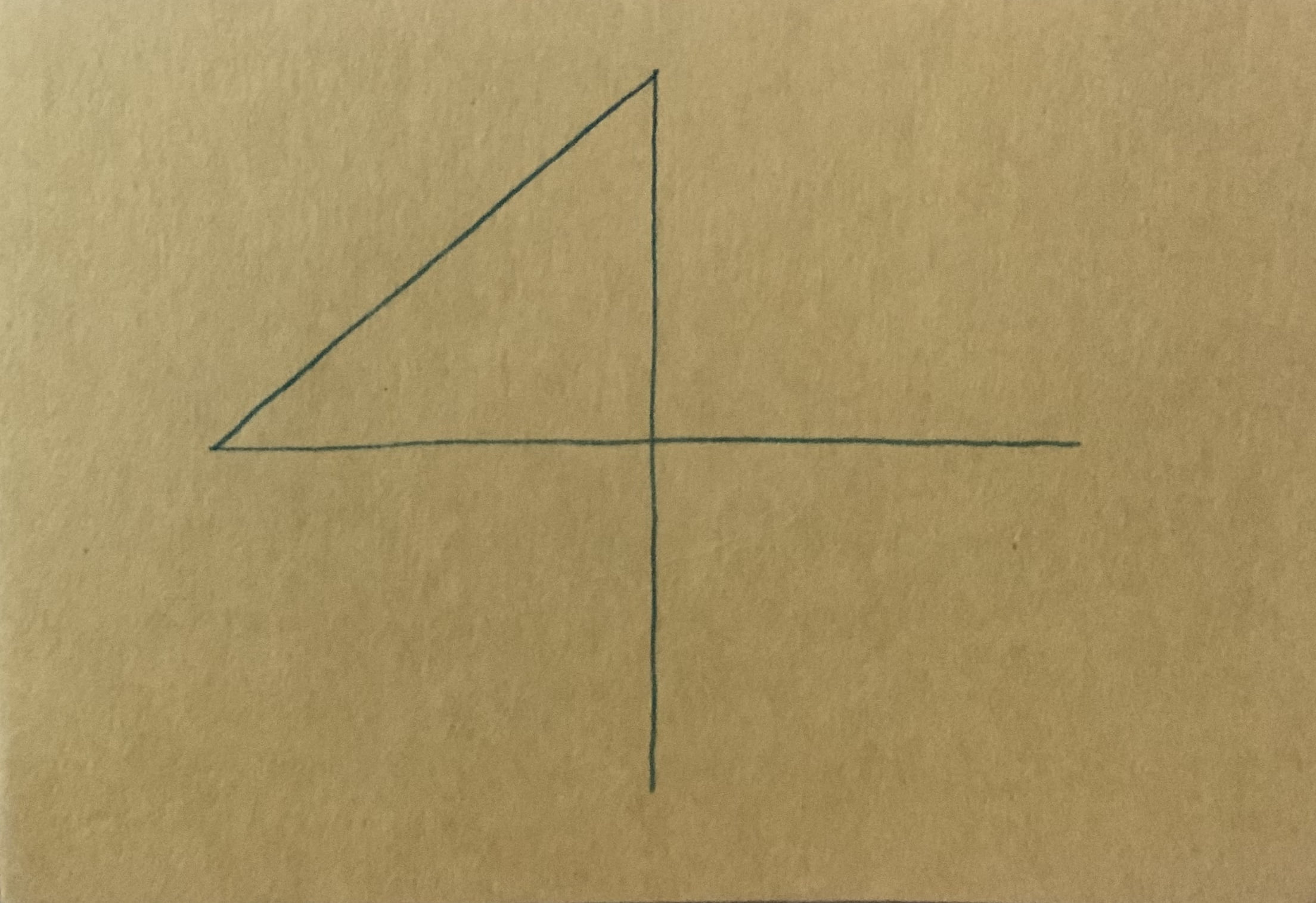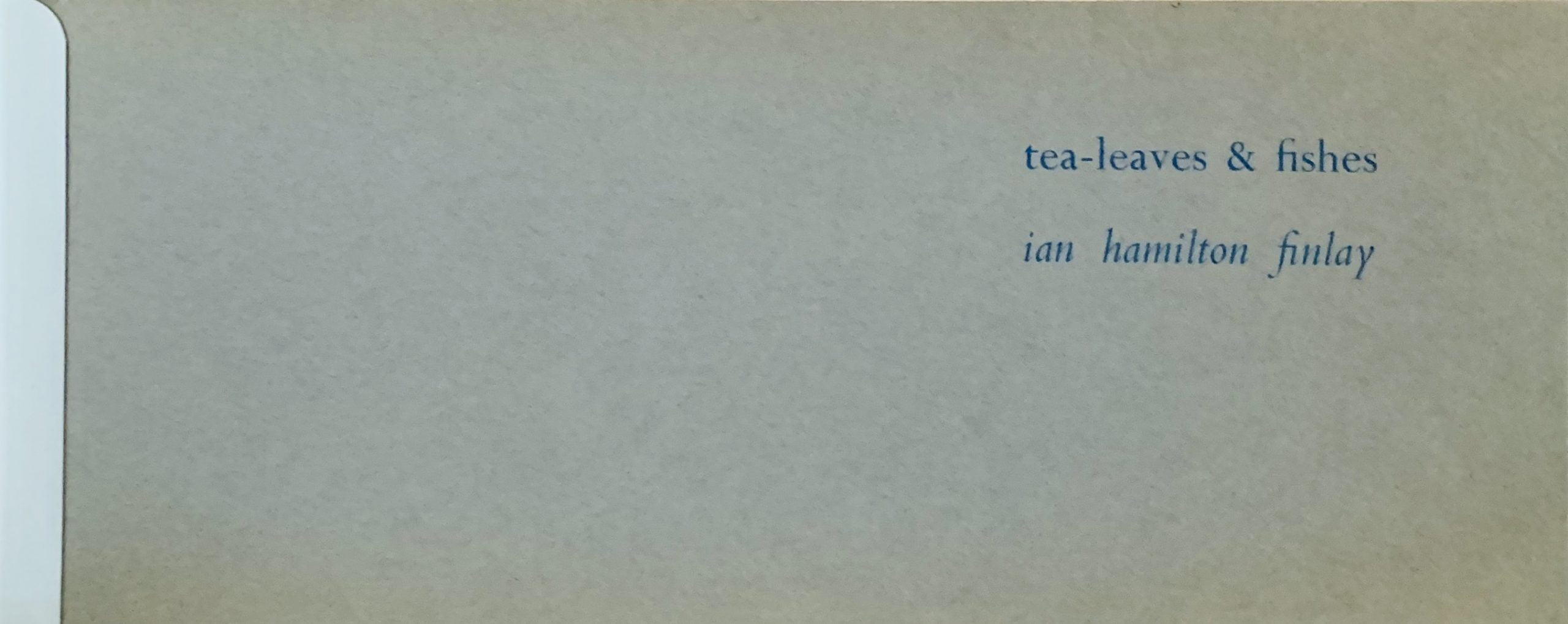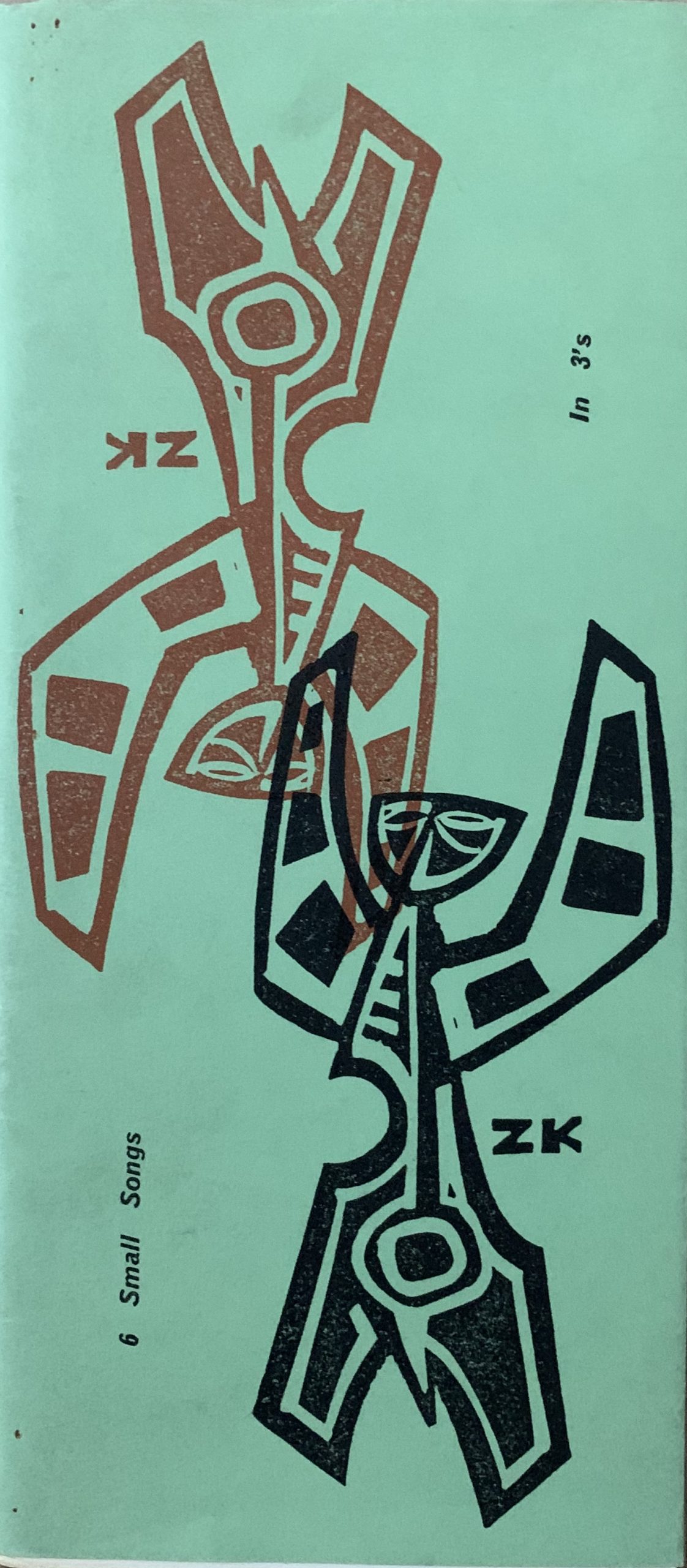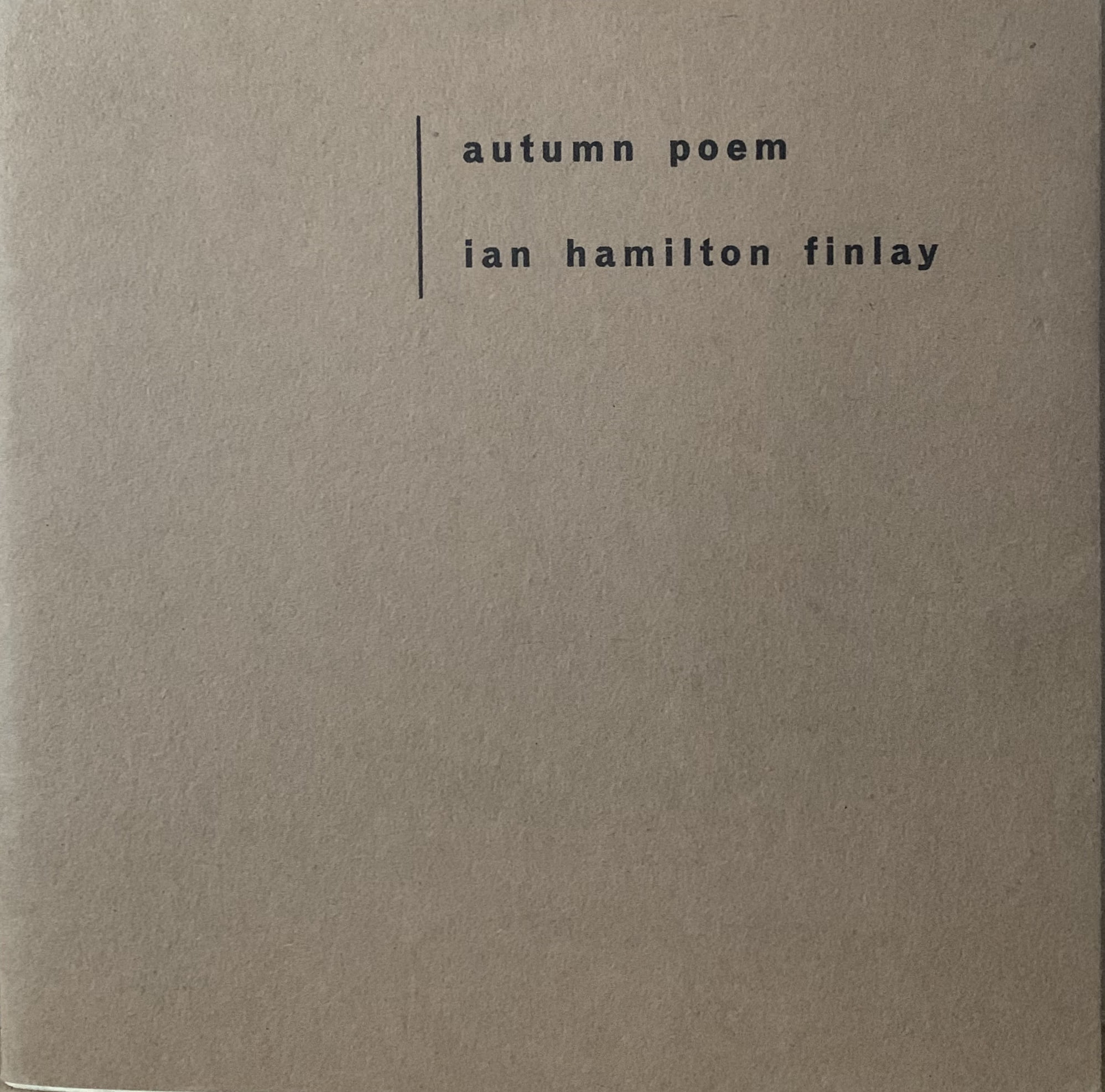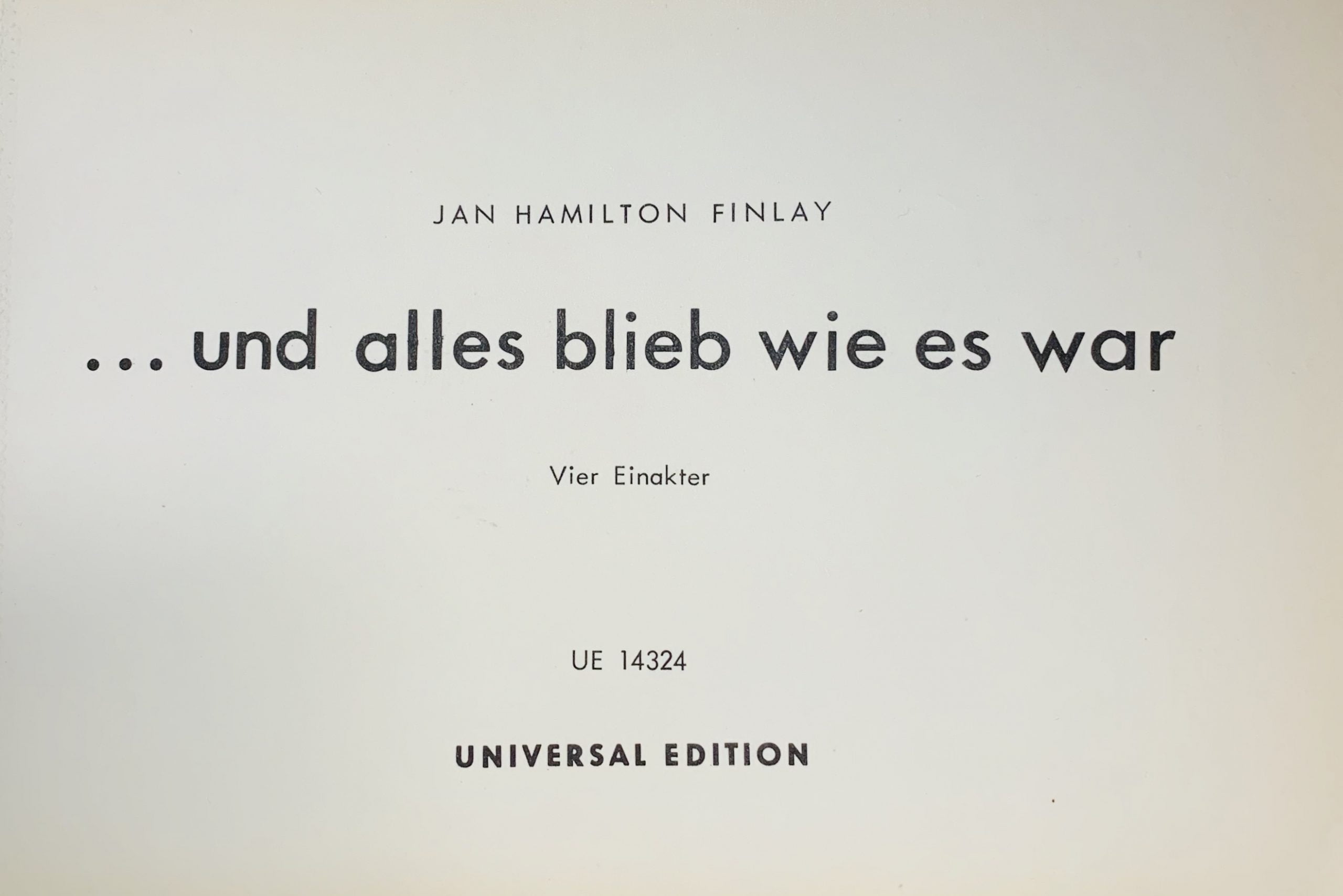20 May BLUE AND BROWN POEMS. 1968. THIRTEEN SILKSCREEN WORKS IN SPIRAL BINDING.
Nottingham: Jargon Press, 1968
50.7 x 38.4cm, calendar with twelve original silkscreens, one silkscreen portrait of the artist, a colophon sheet and front cover and backing board. Spiral bound along top. Introduction by Jonathan Williams and a foreword by Mike Weaver. Designed by Herbert M. Rosenthal.
Twelve colour prints issued as a large folio spiral-bound calendar, featuring short commentaries by Stephen Bann based on information provided to him by Finlay.
The title refers to Wittgenstein's 'Blue and Brown Books' (1958) in which he developed the concept that the meaning of a word is its actual use in language.
This is quite possibly possibly the most sought after publication by Finlay - the twelve serigraphs are each individual concrete poetry works and dealers usually split this publication up and frame the individual prints and sell them at high prices. This example is unusually complete and is housed in the original custom made cardboard shipping box address to the editor of the Black Sparrow Press Seamus Cooney. There is some browning to the front purple sheet but overall this is one of the best example of this rare publication you can find..
Murray has this as reference 3.28 and notes a complete set of the prints are for sale in 2006 for £2,000. The Prints Drukgrafik catalogue reference is 2.64.4 and the 12 images can be seen on pages 19 - 21.
...

